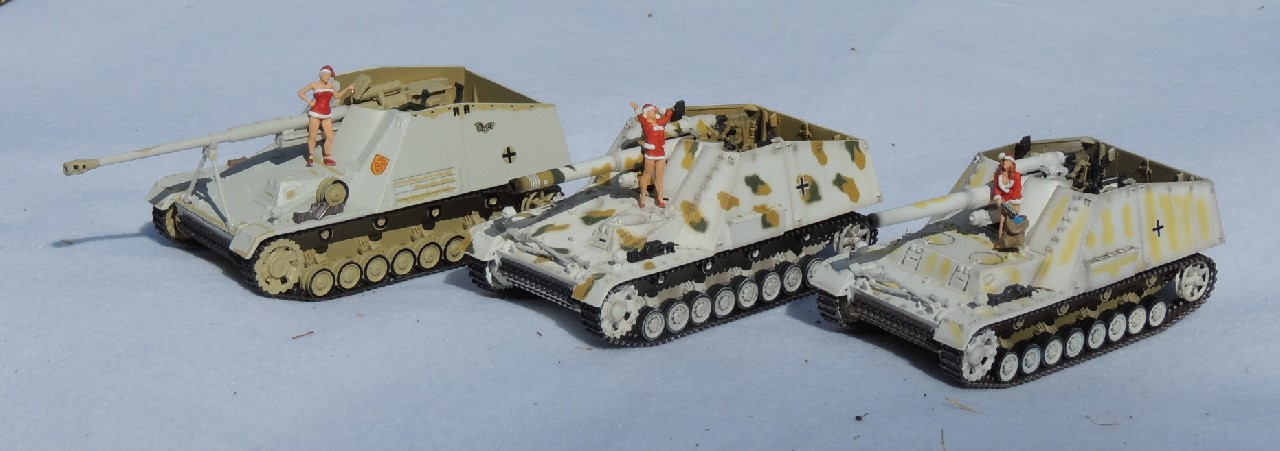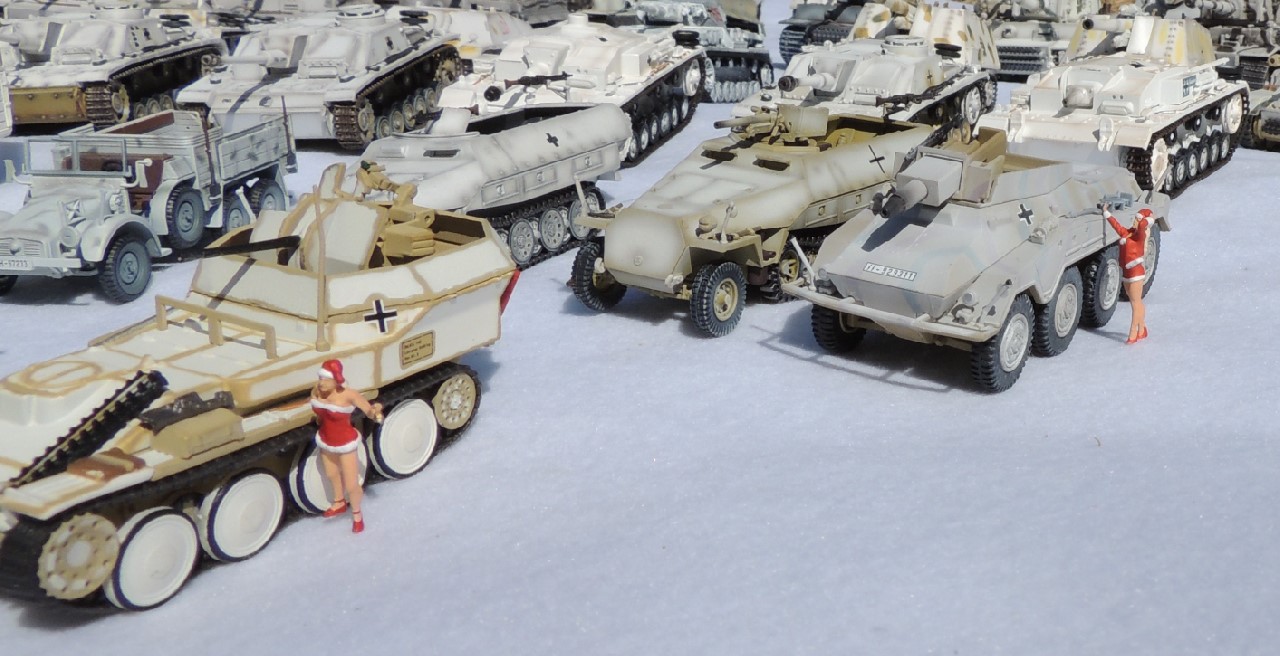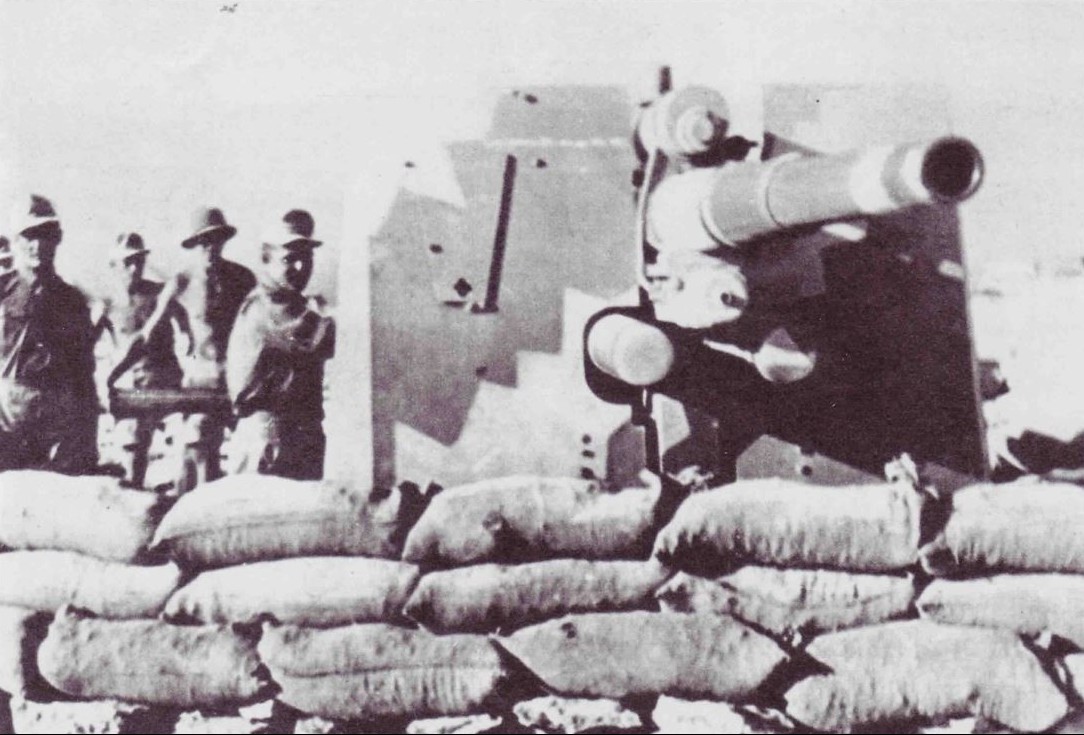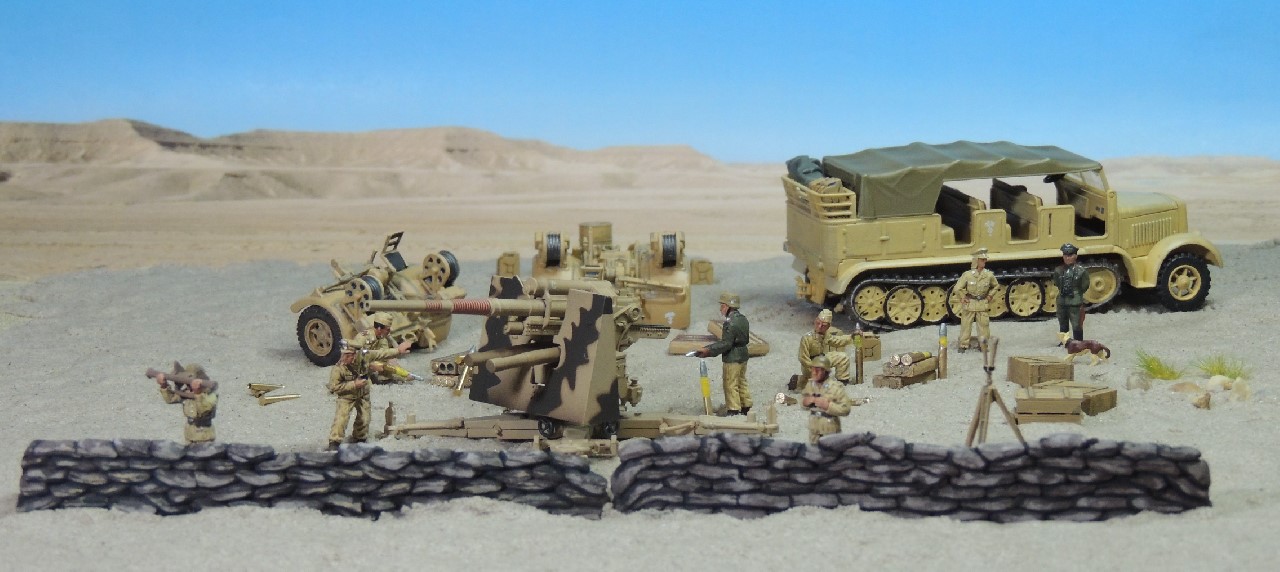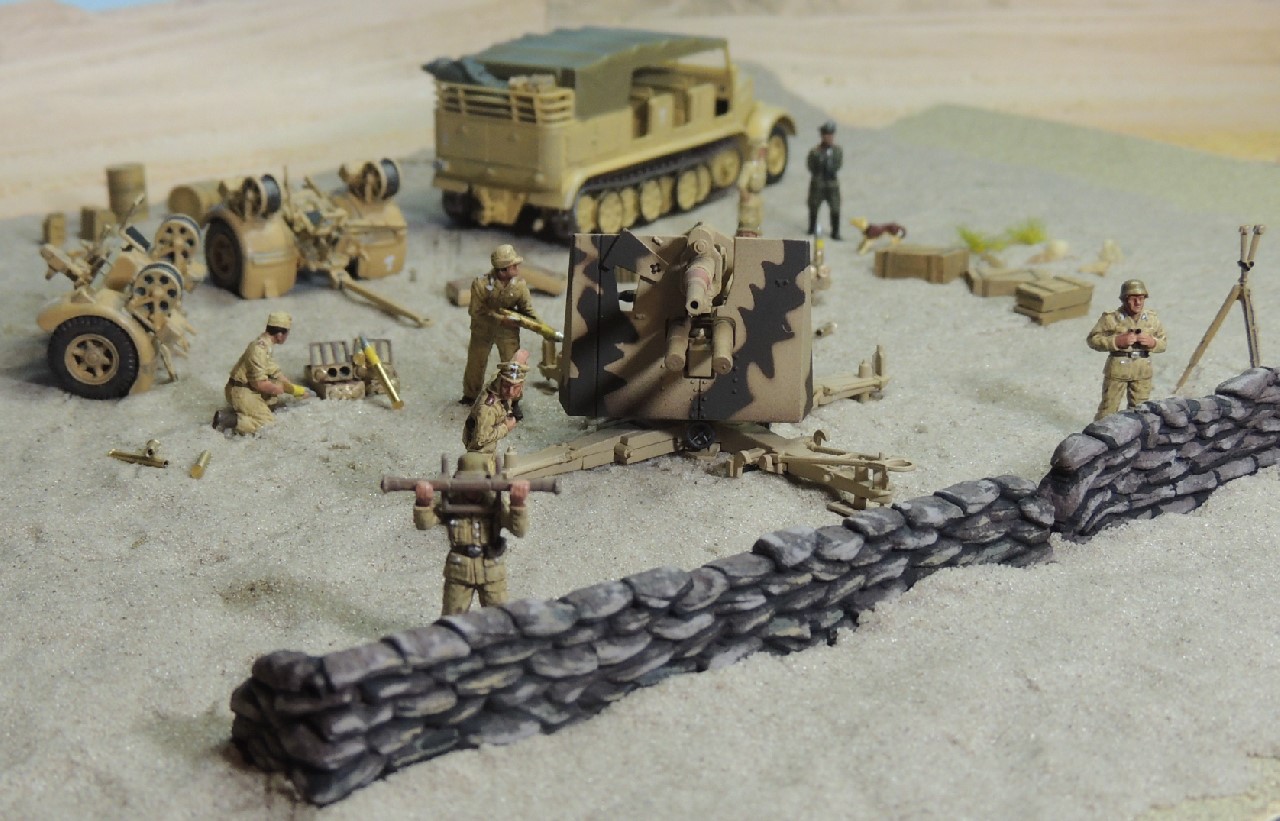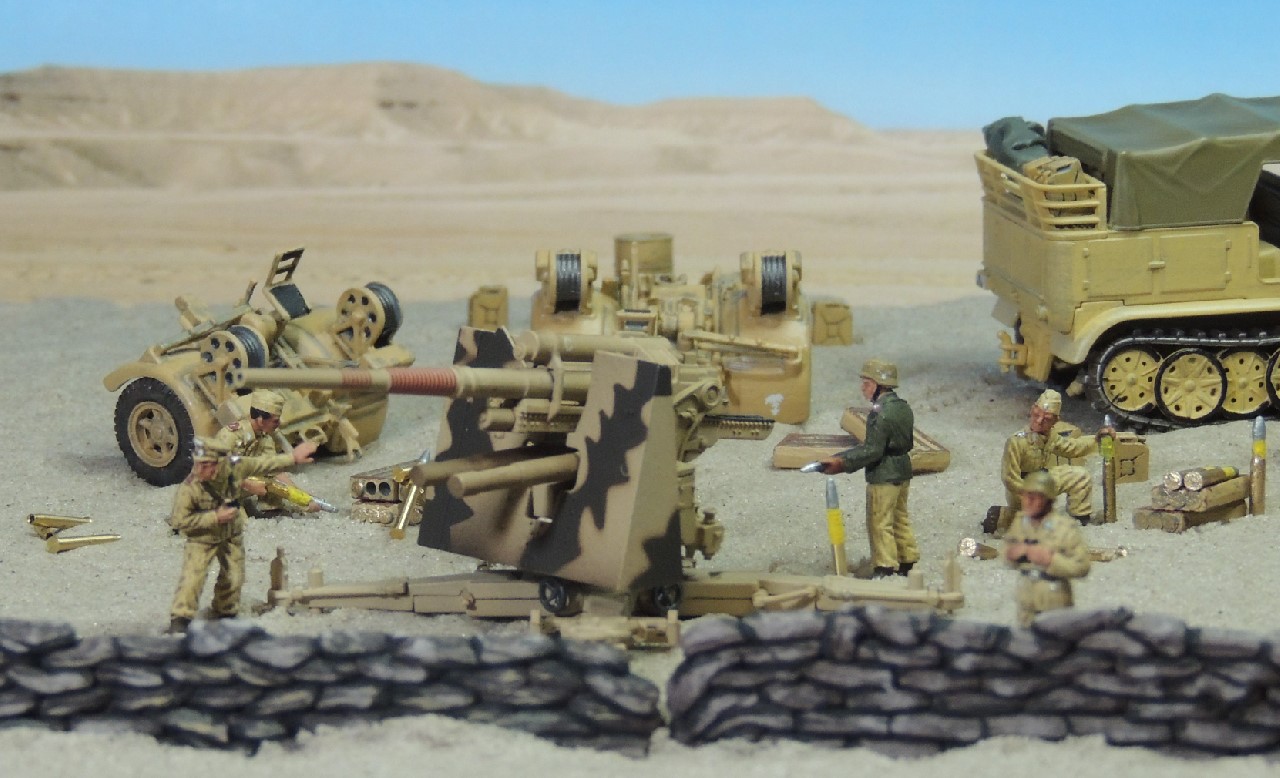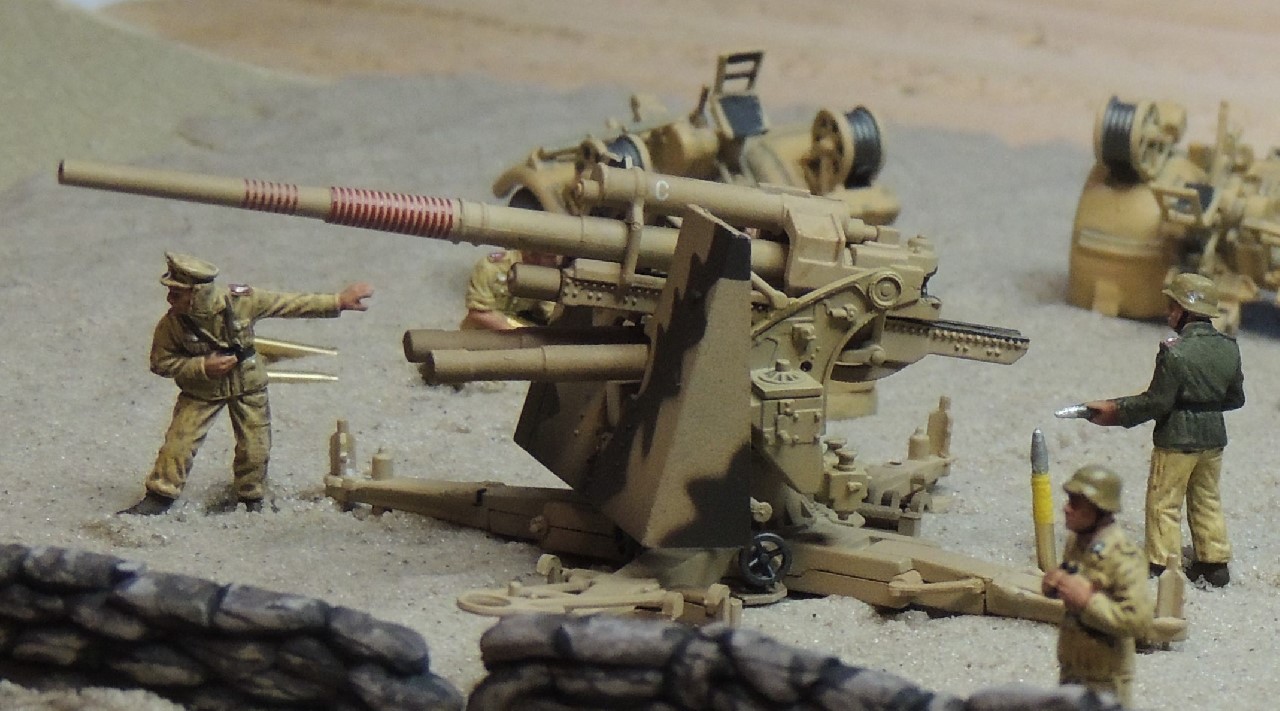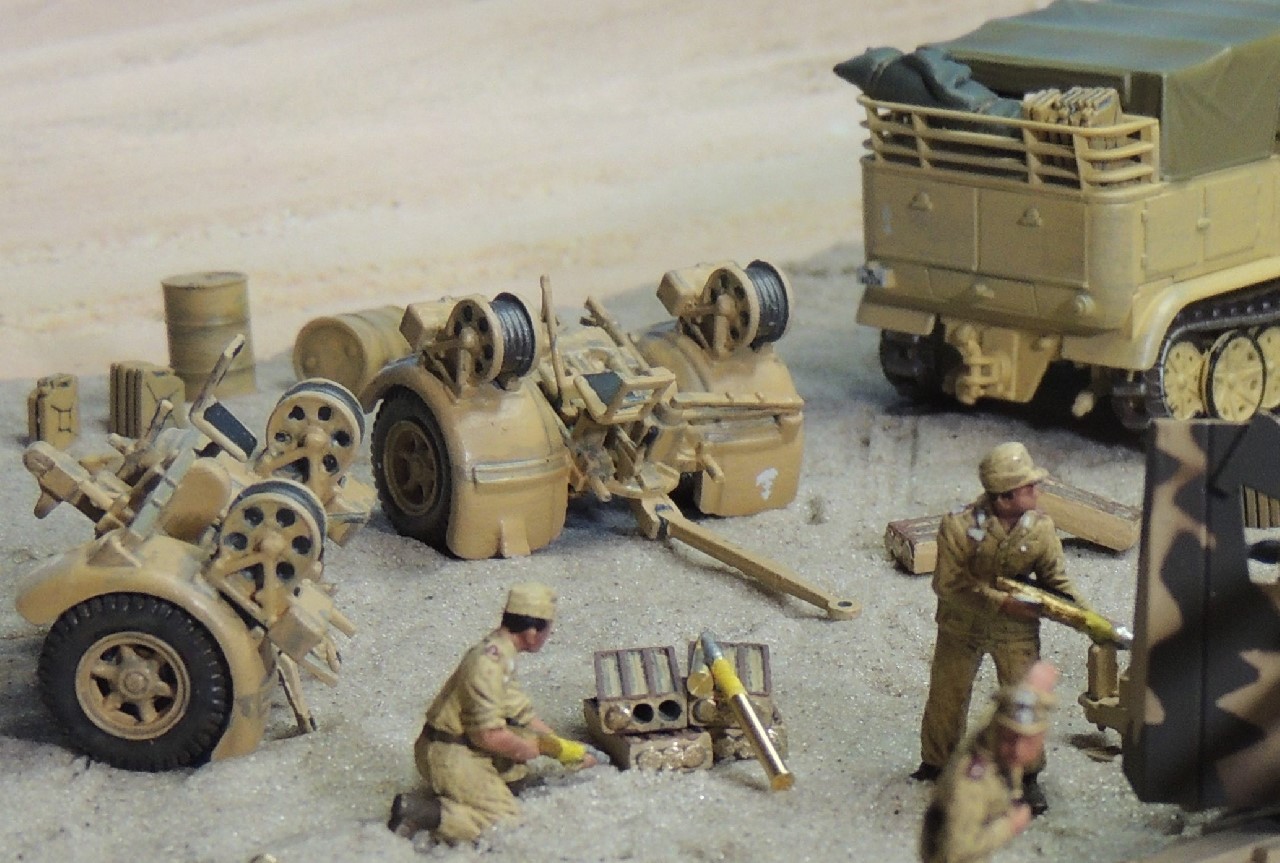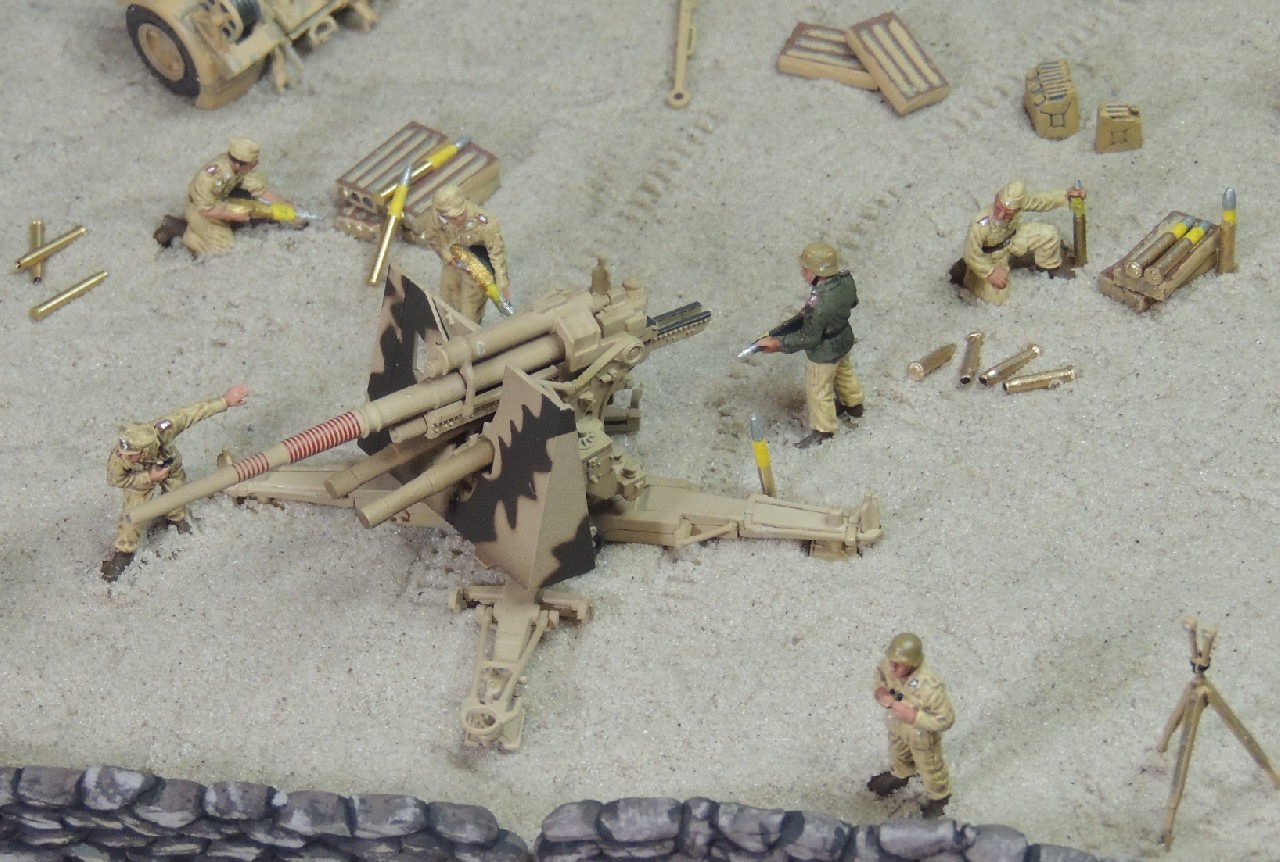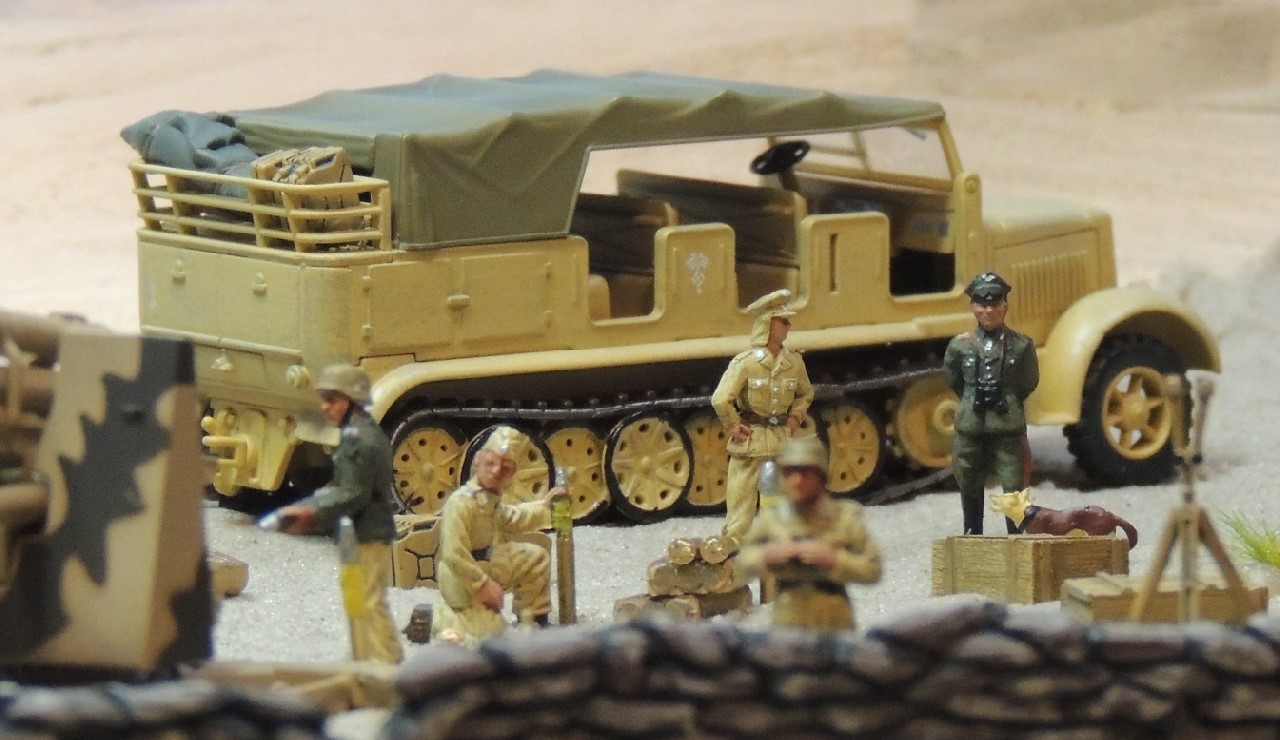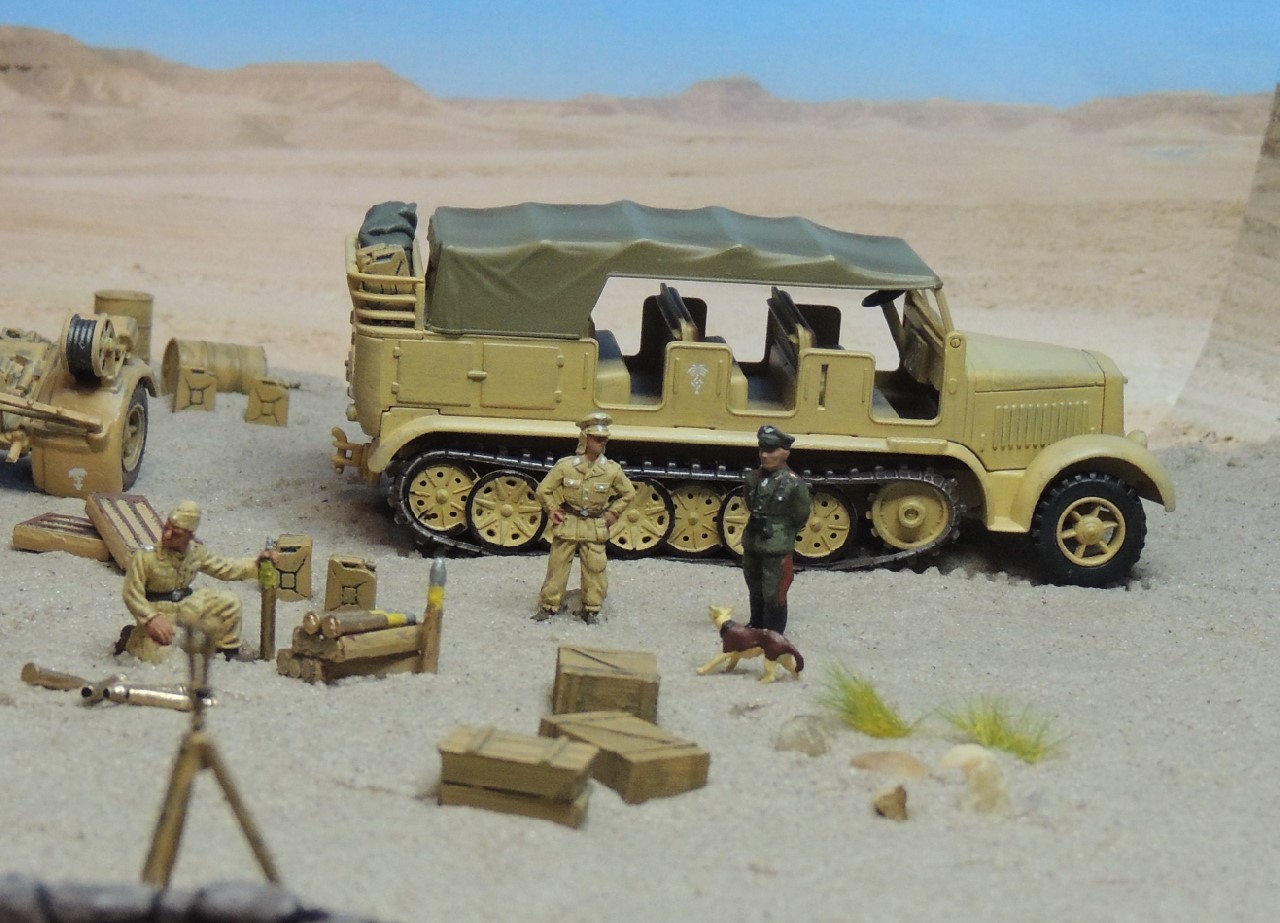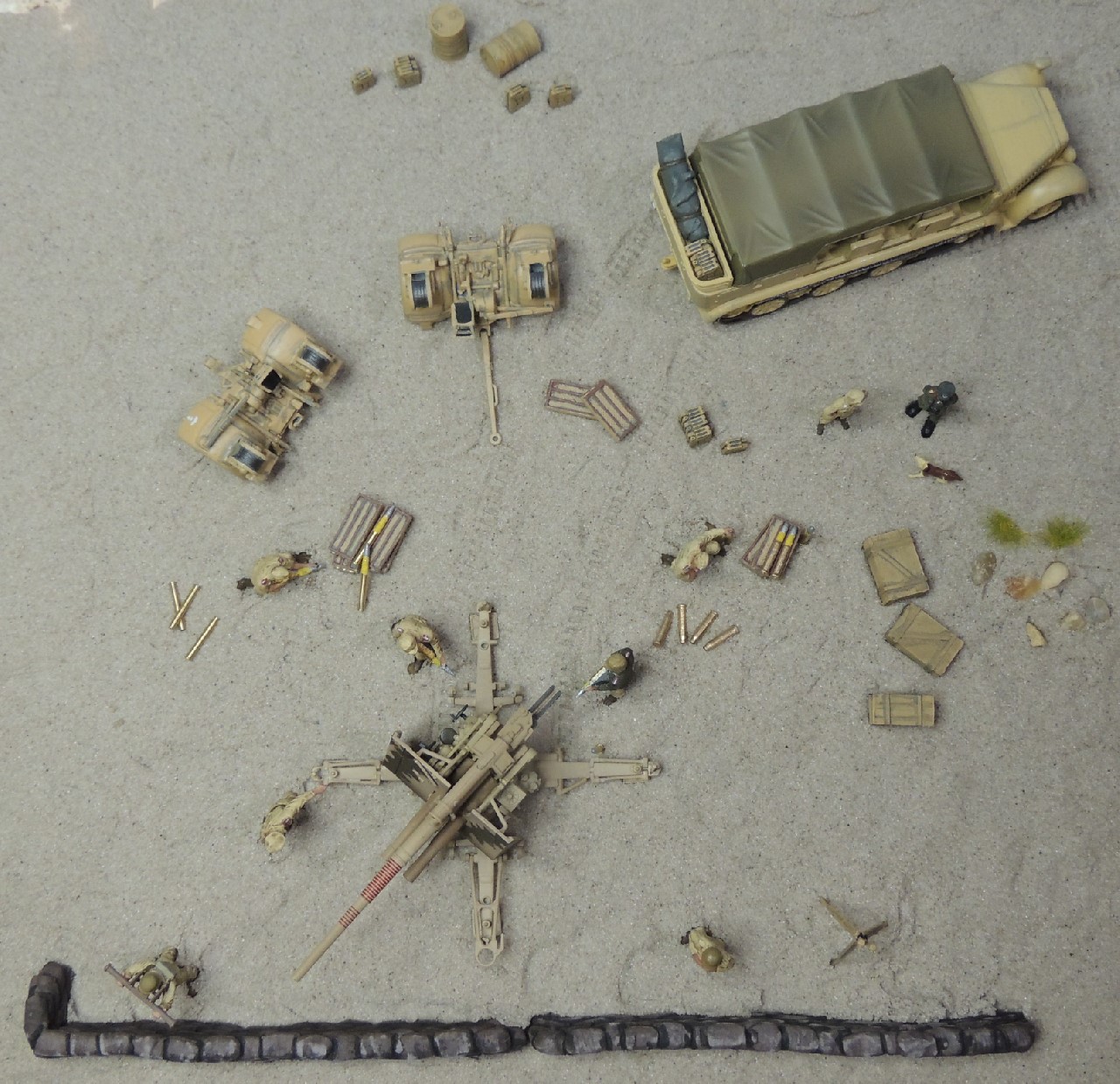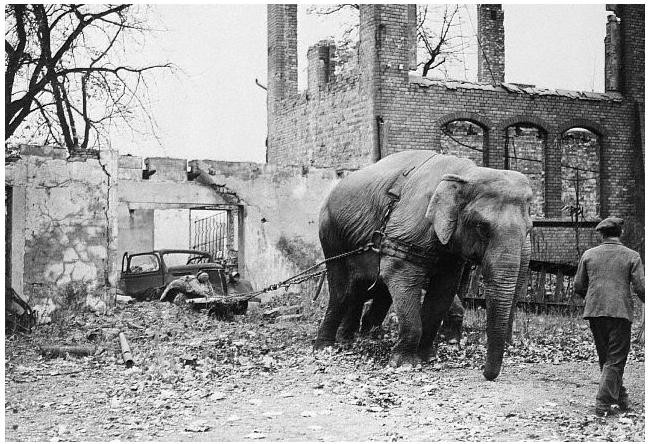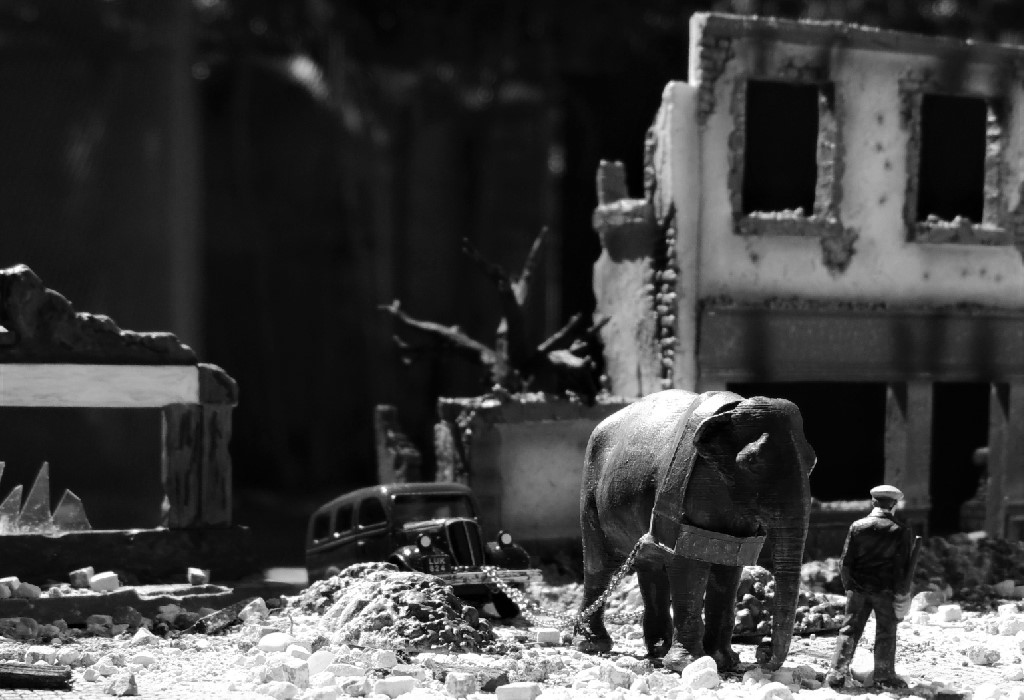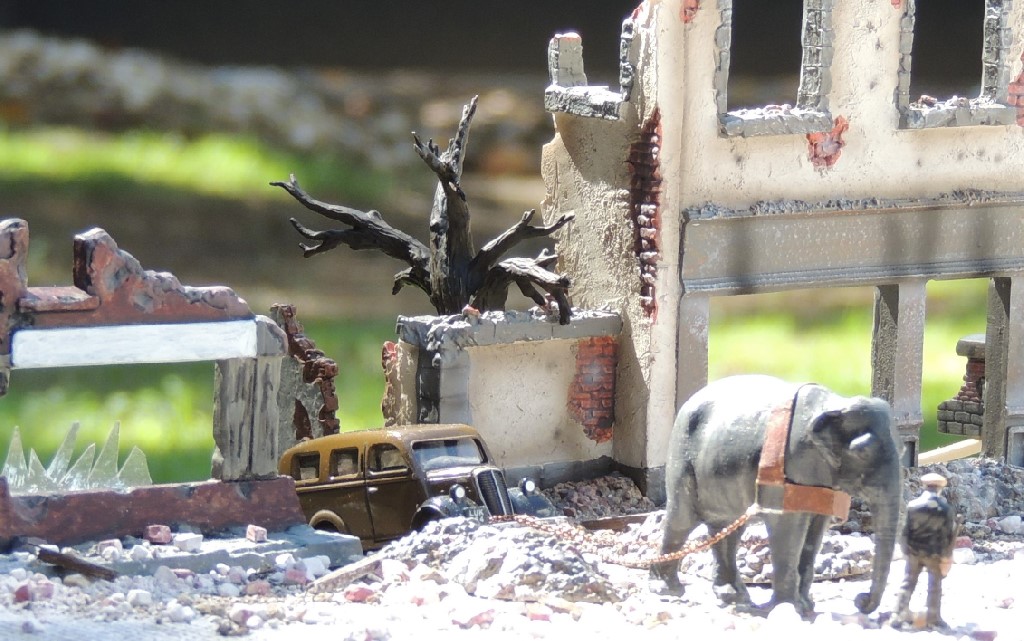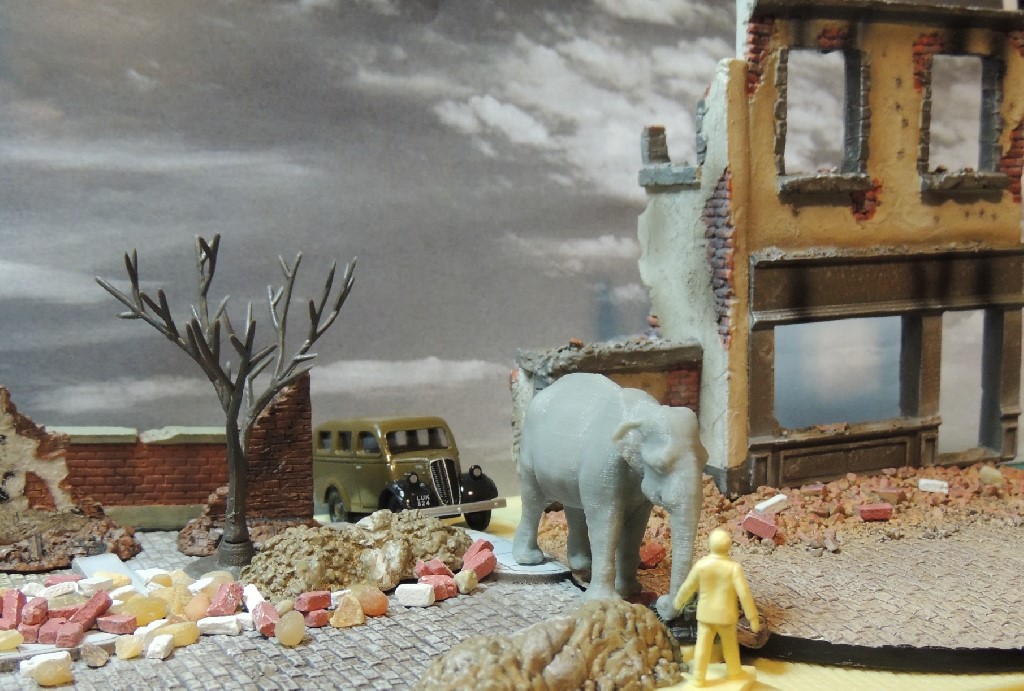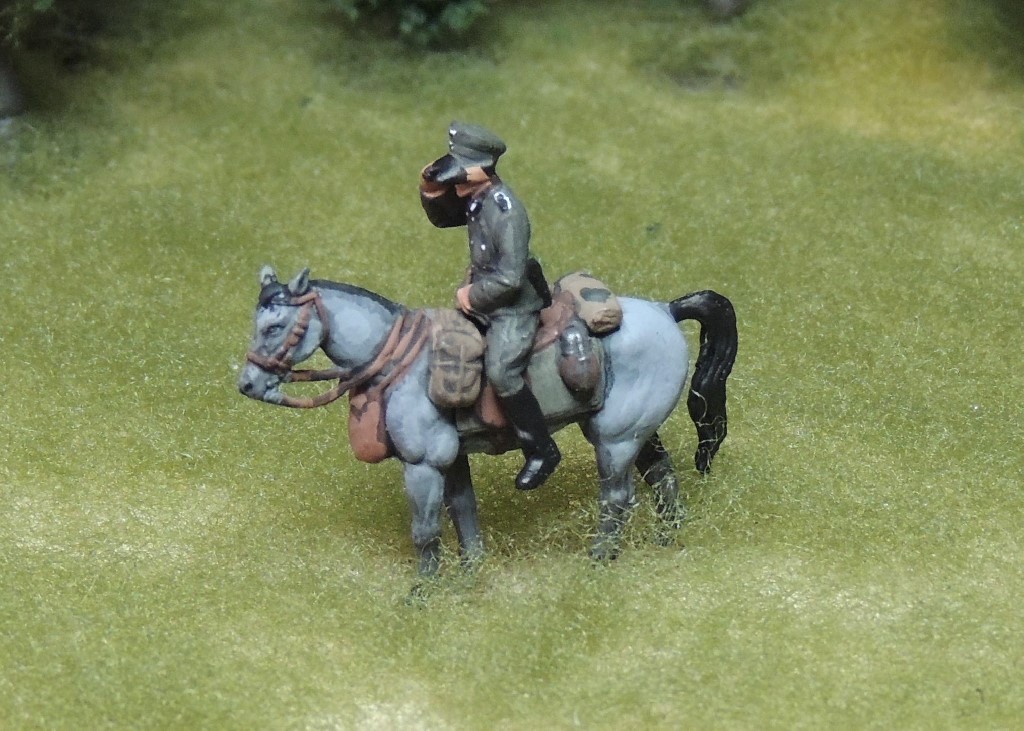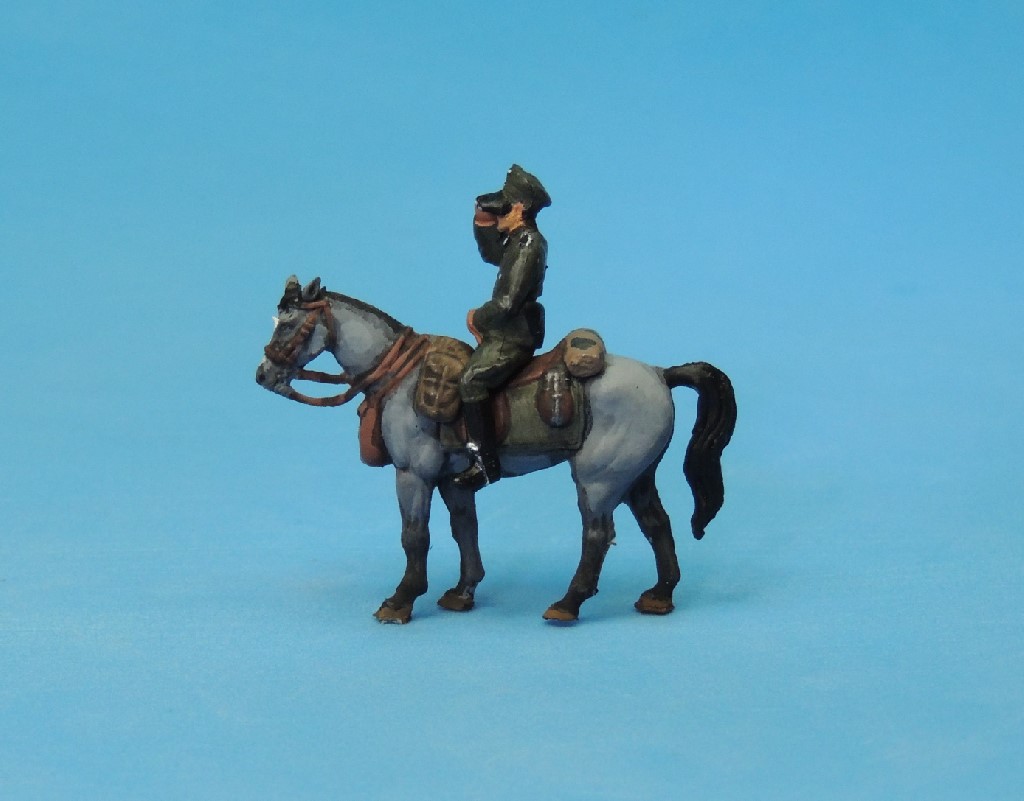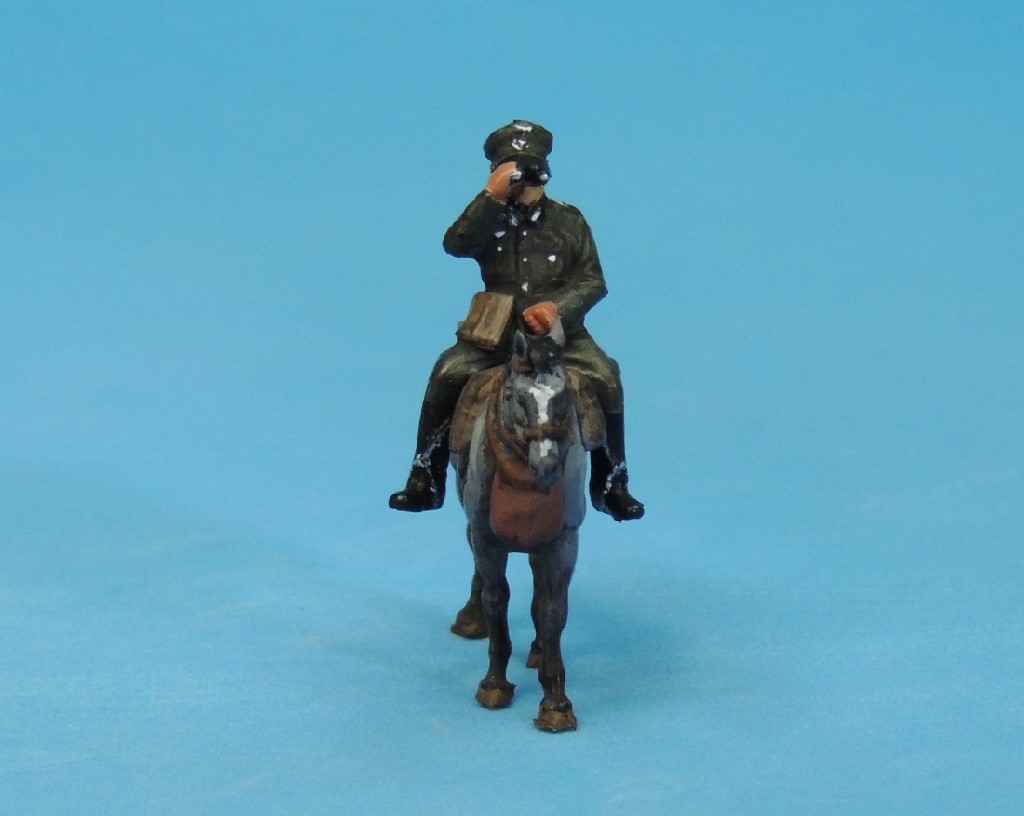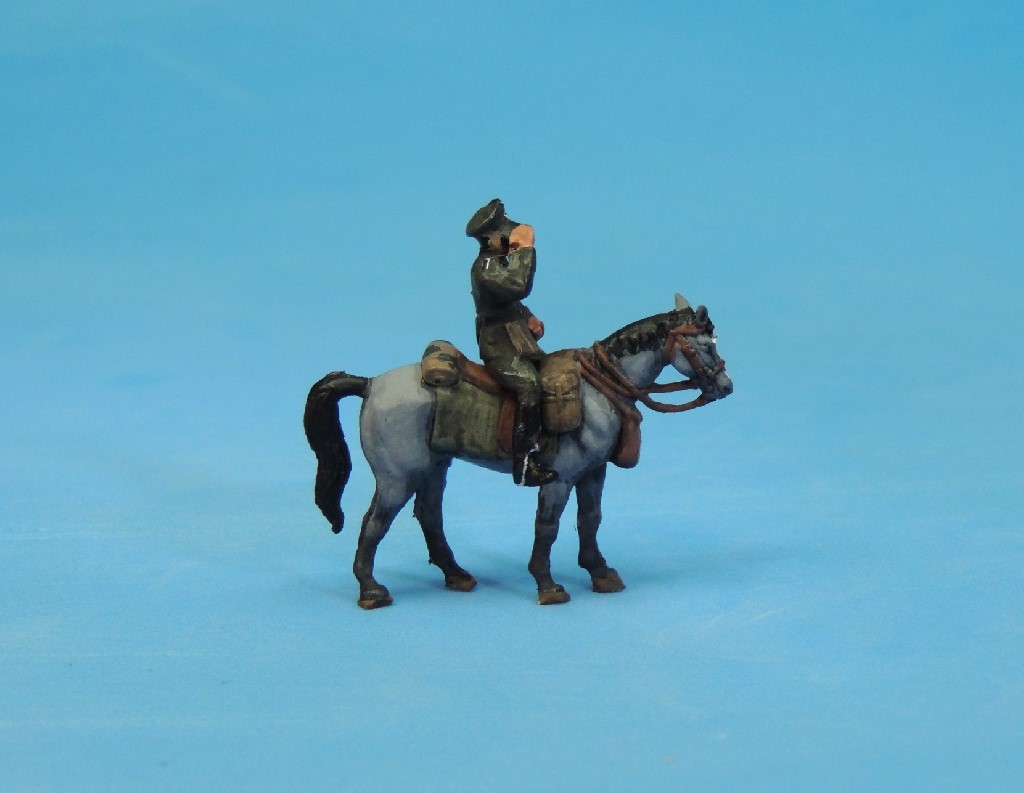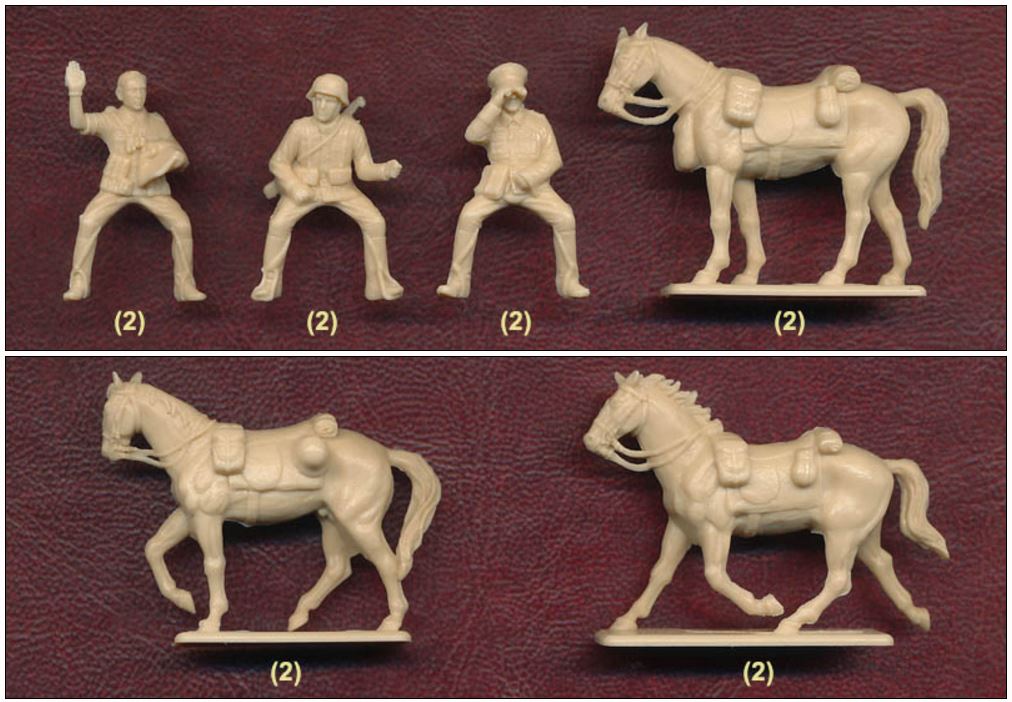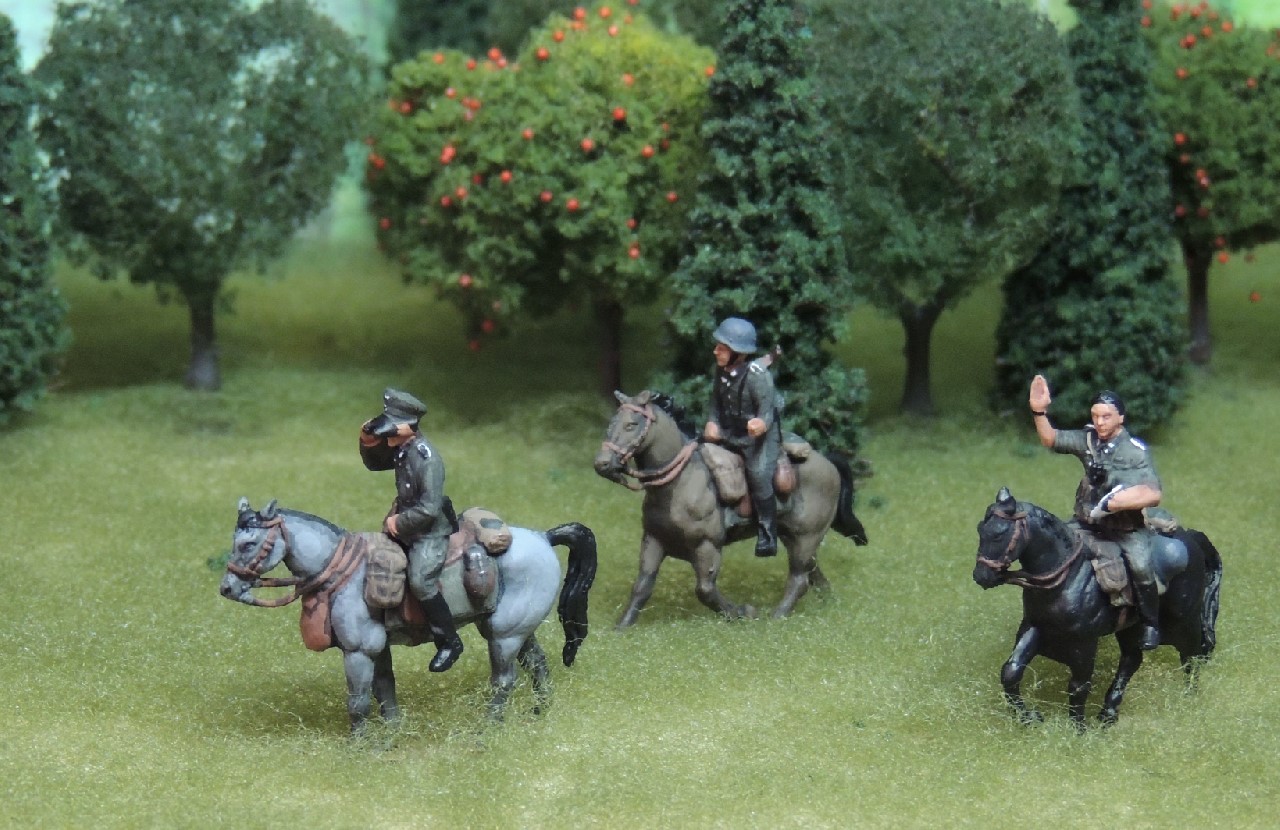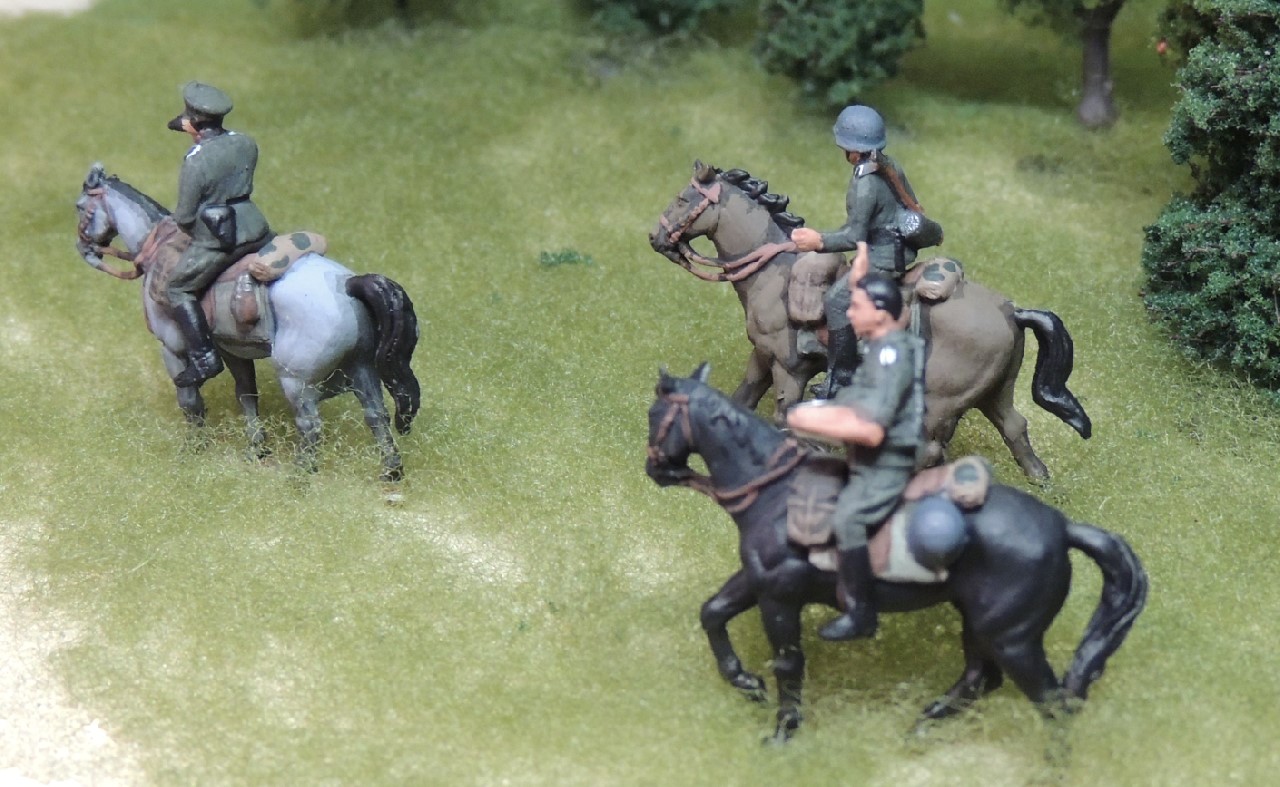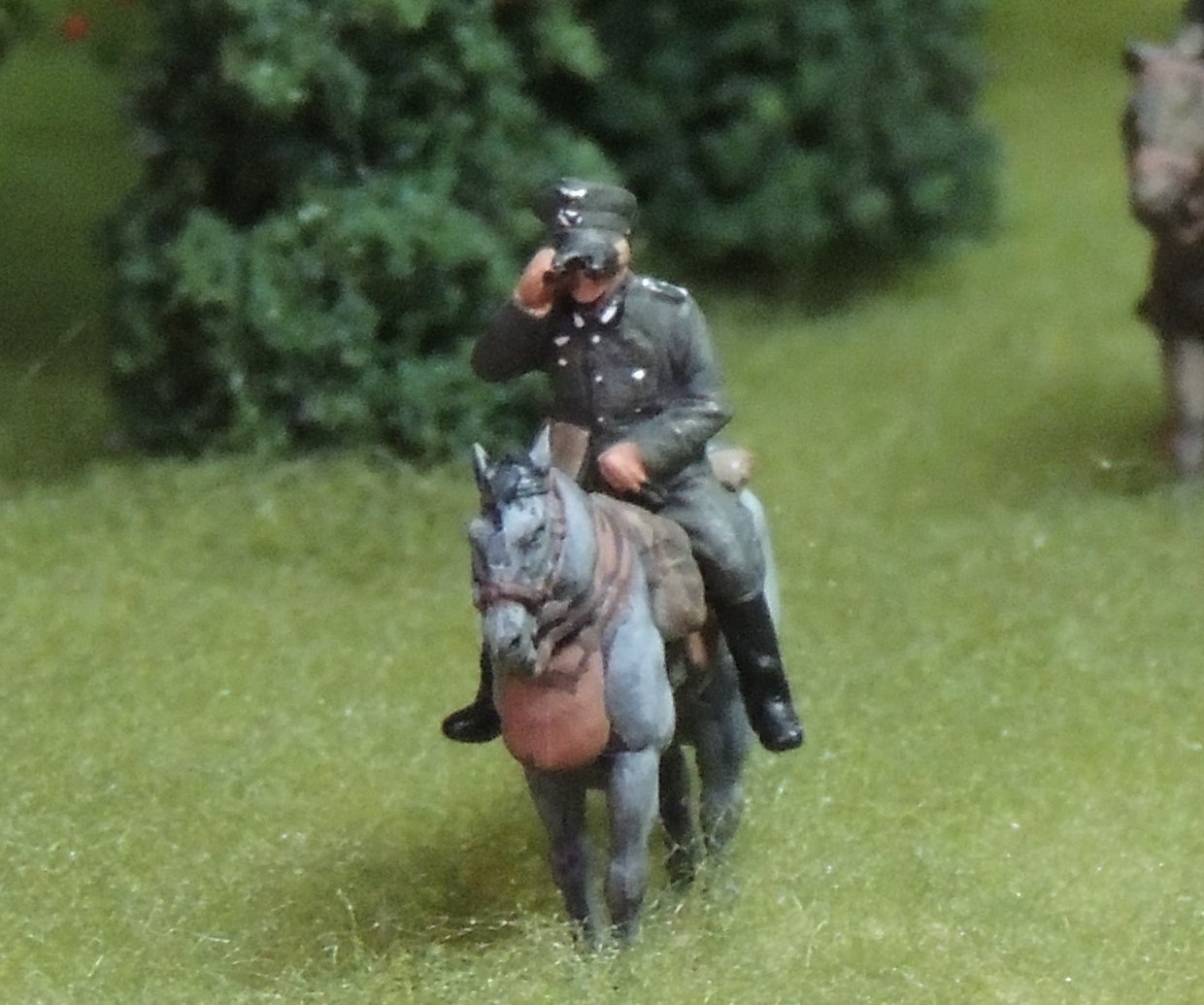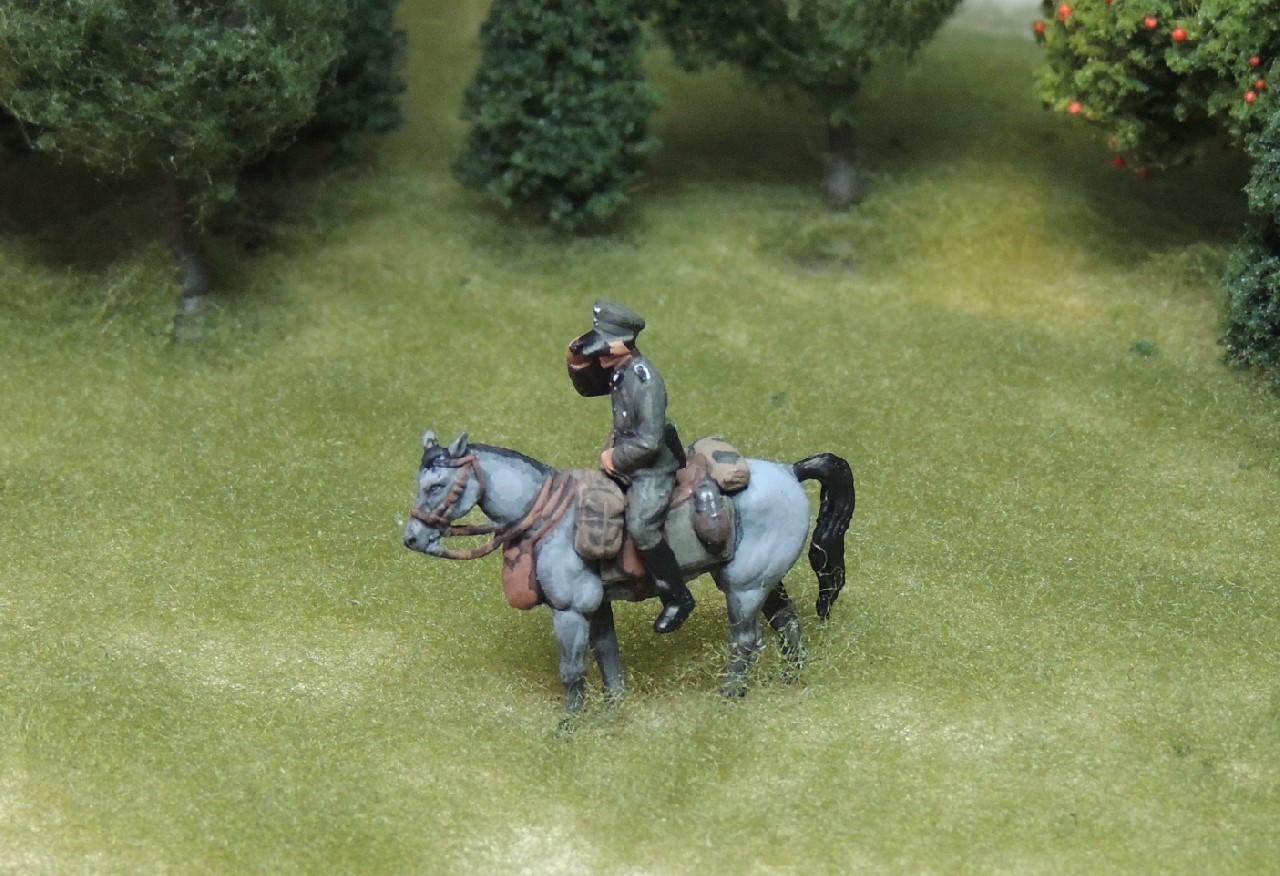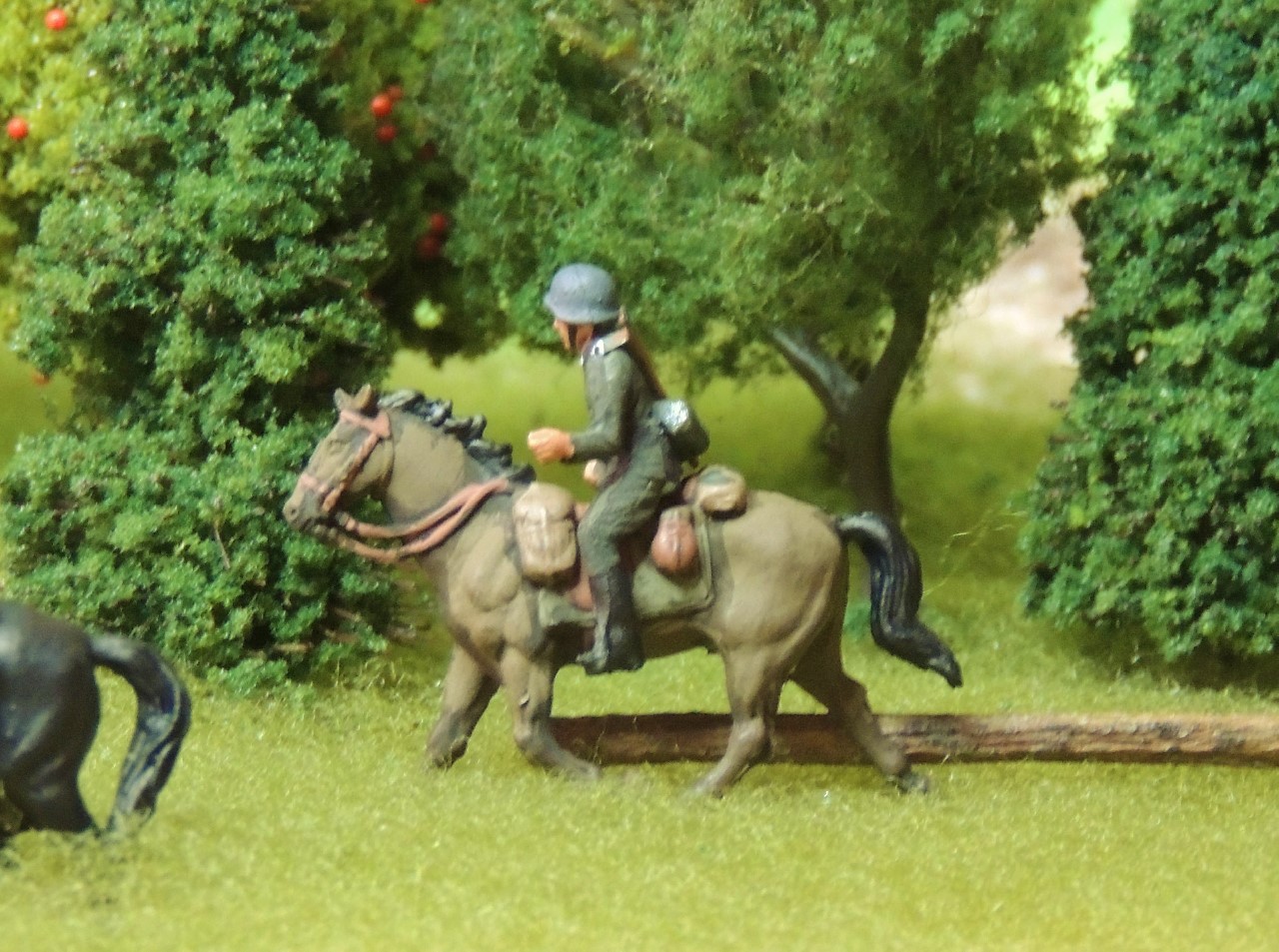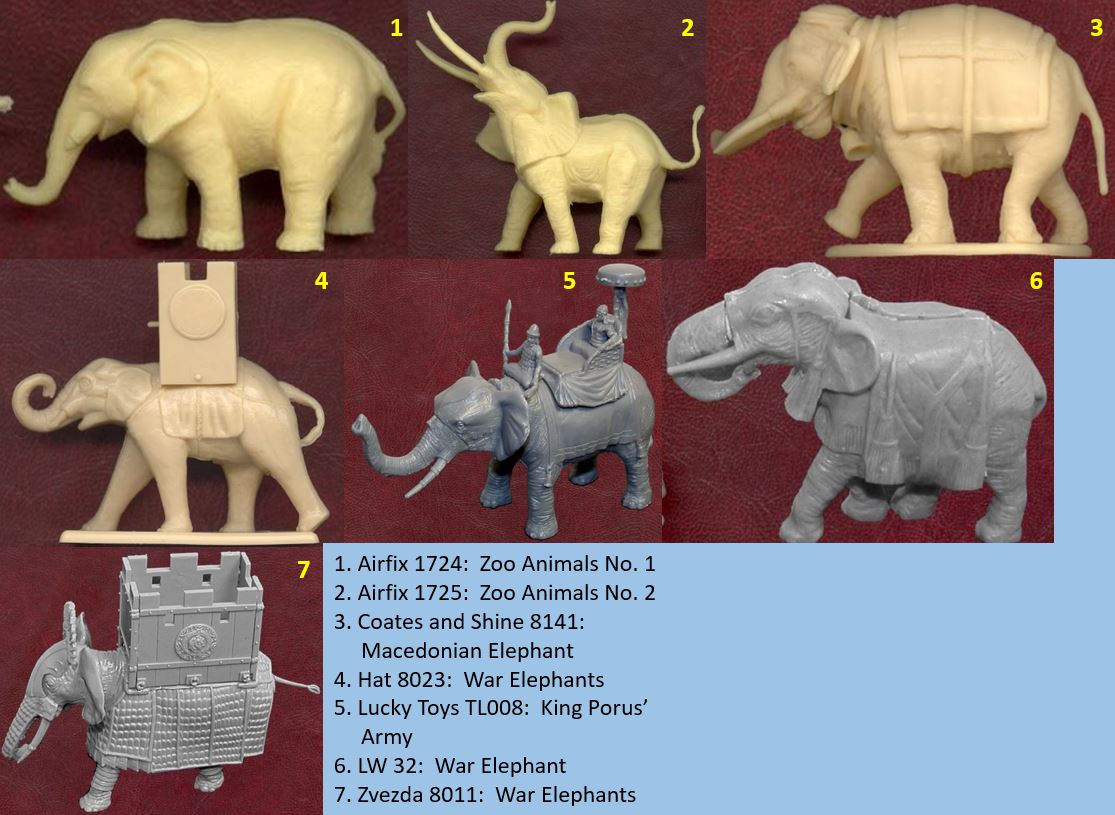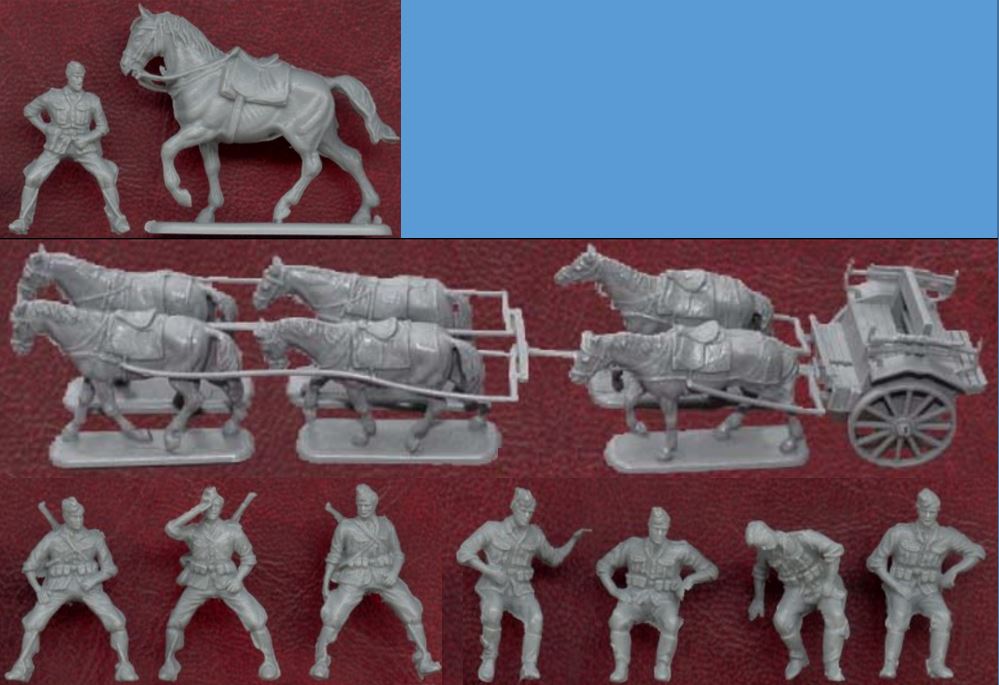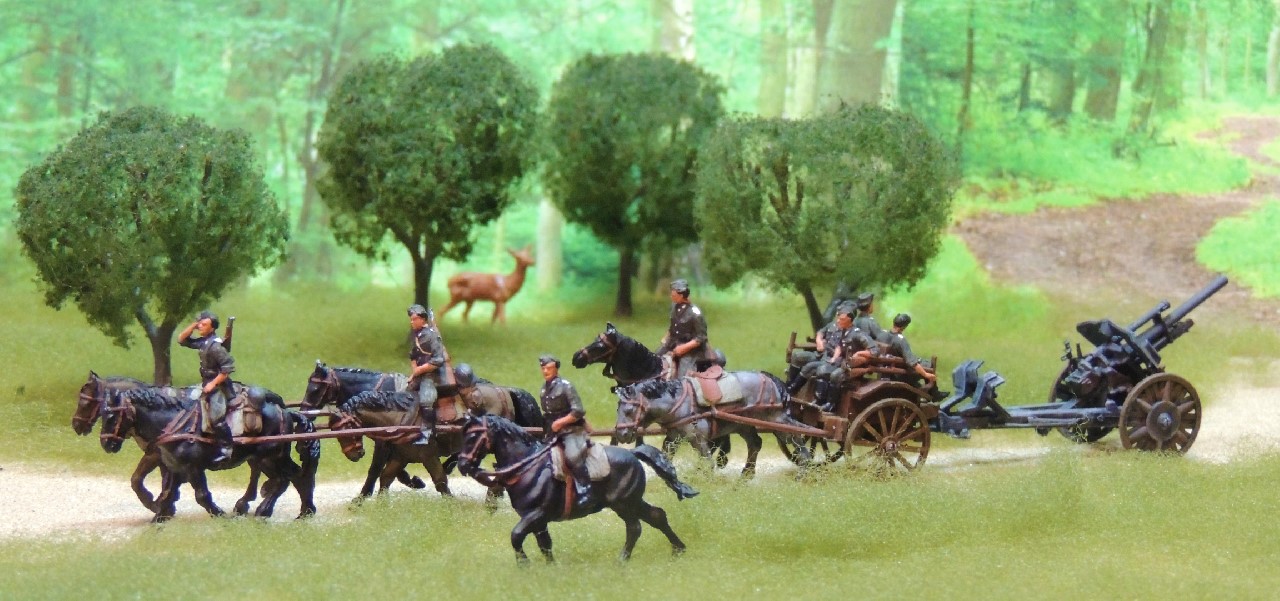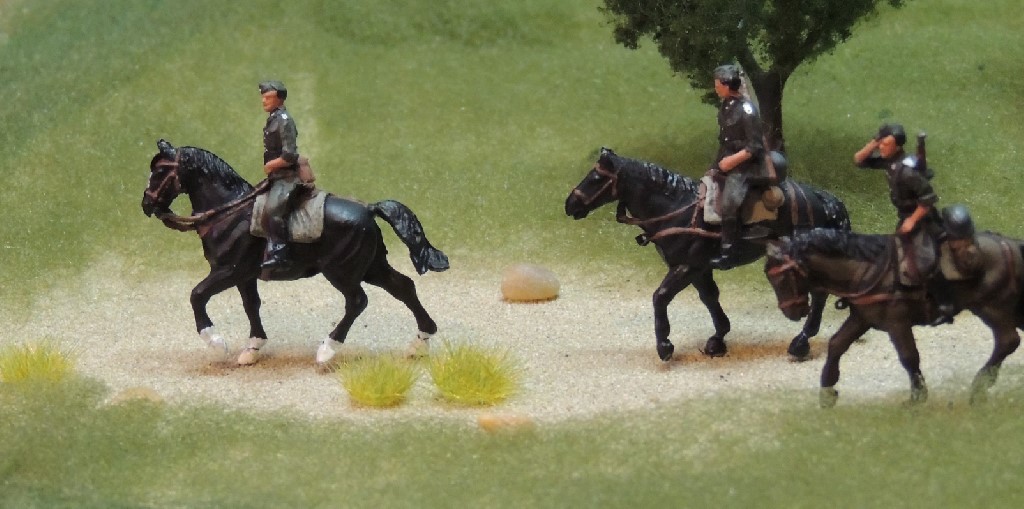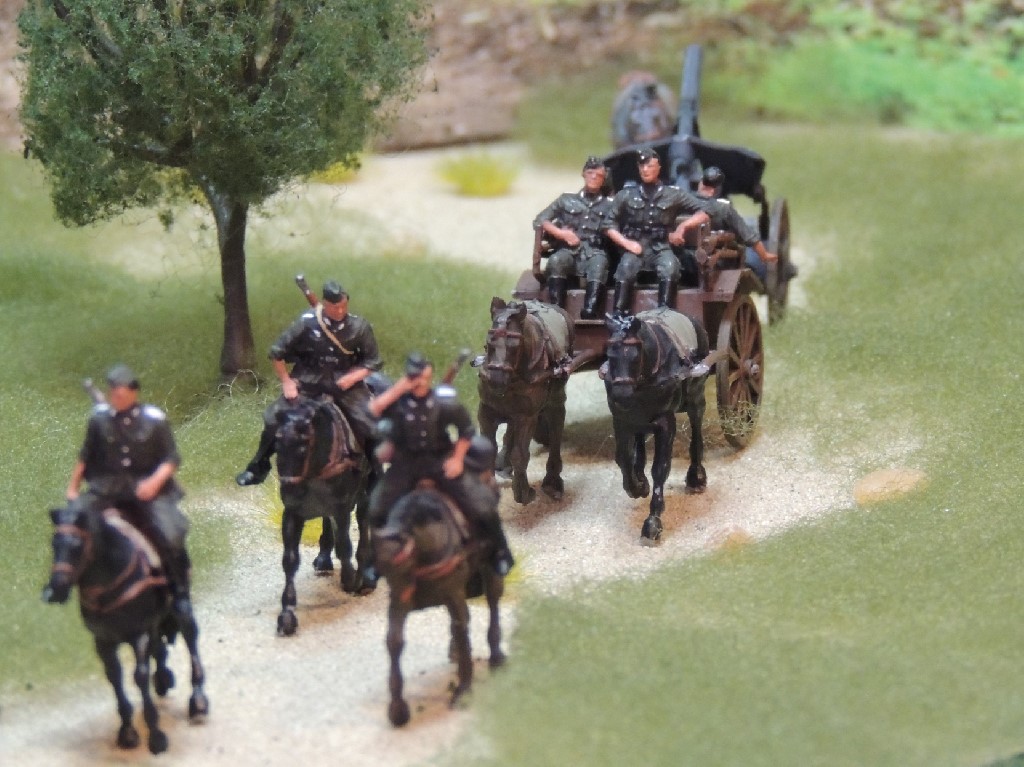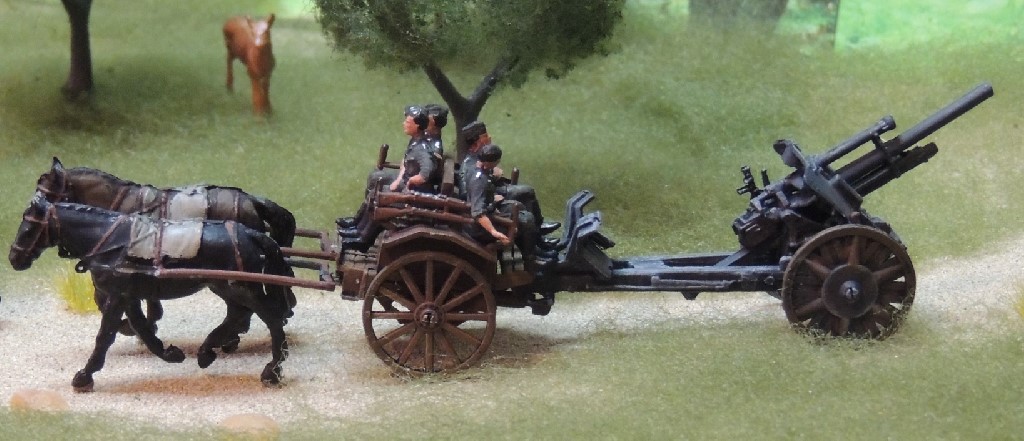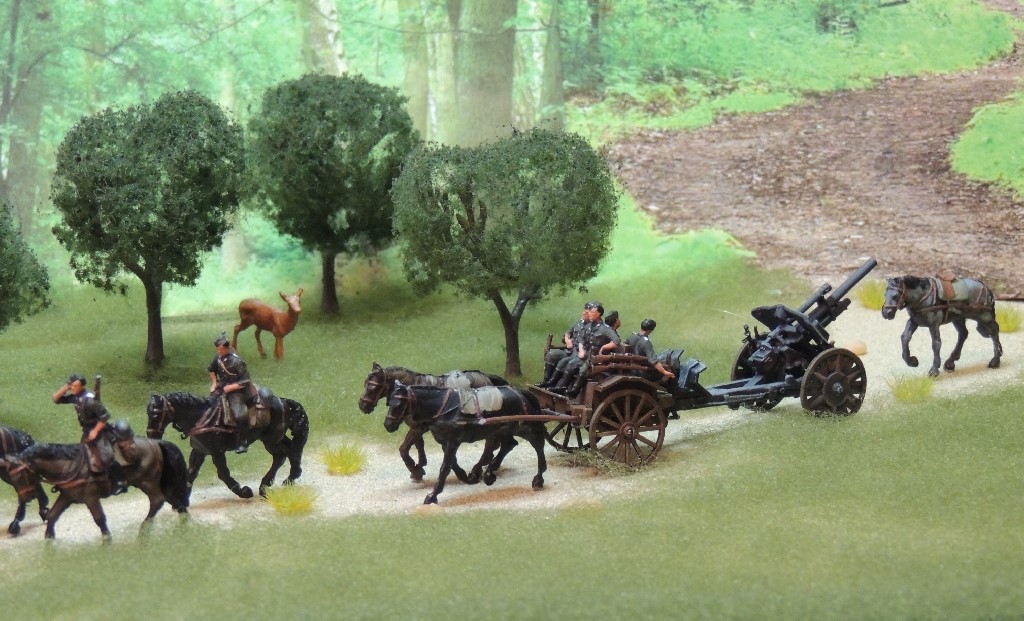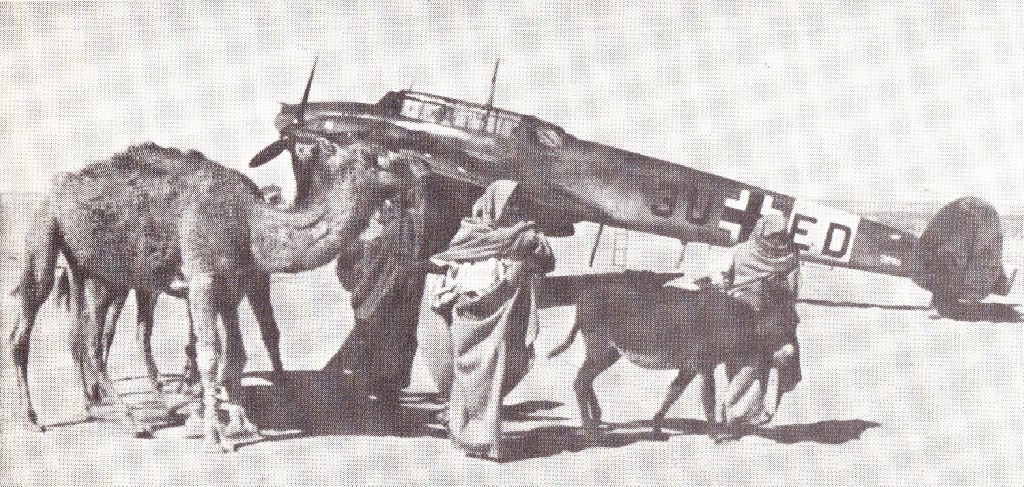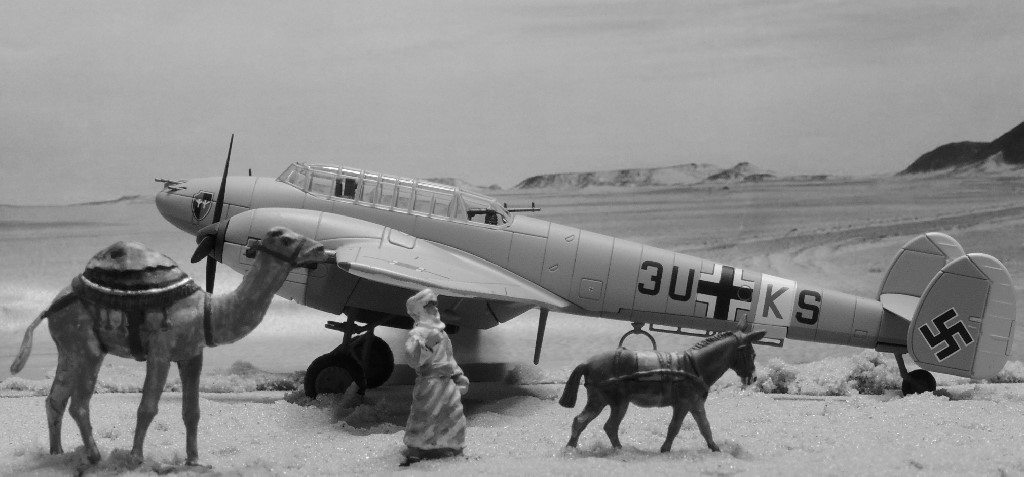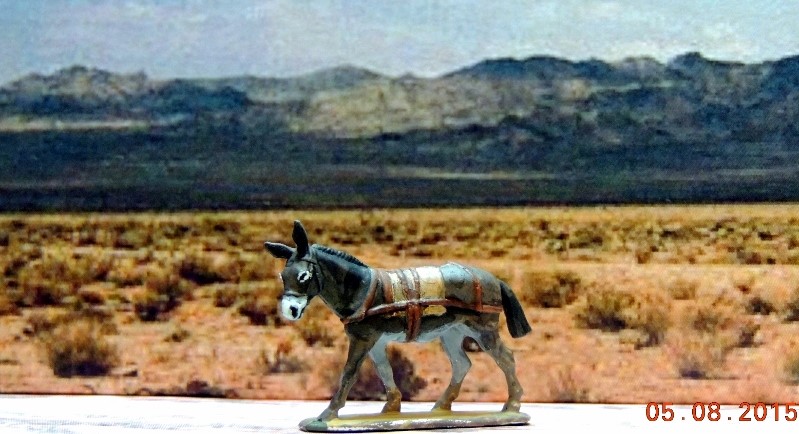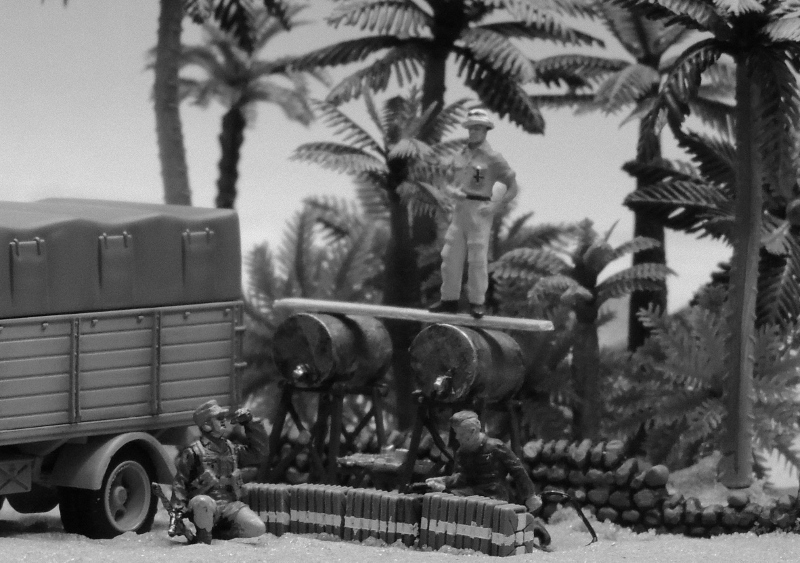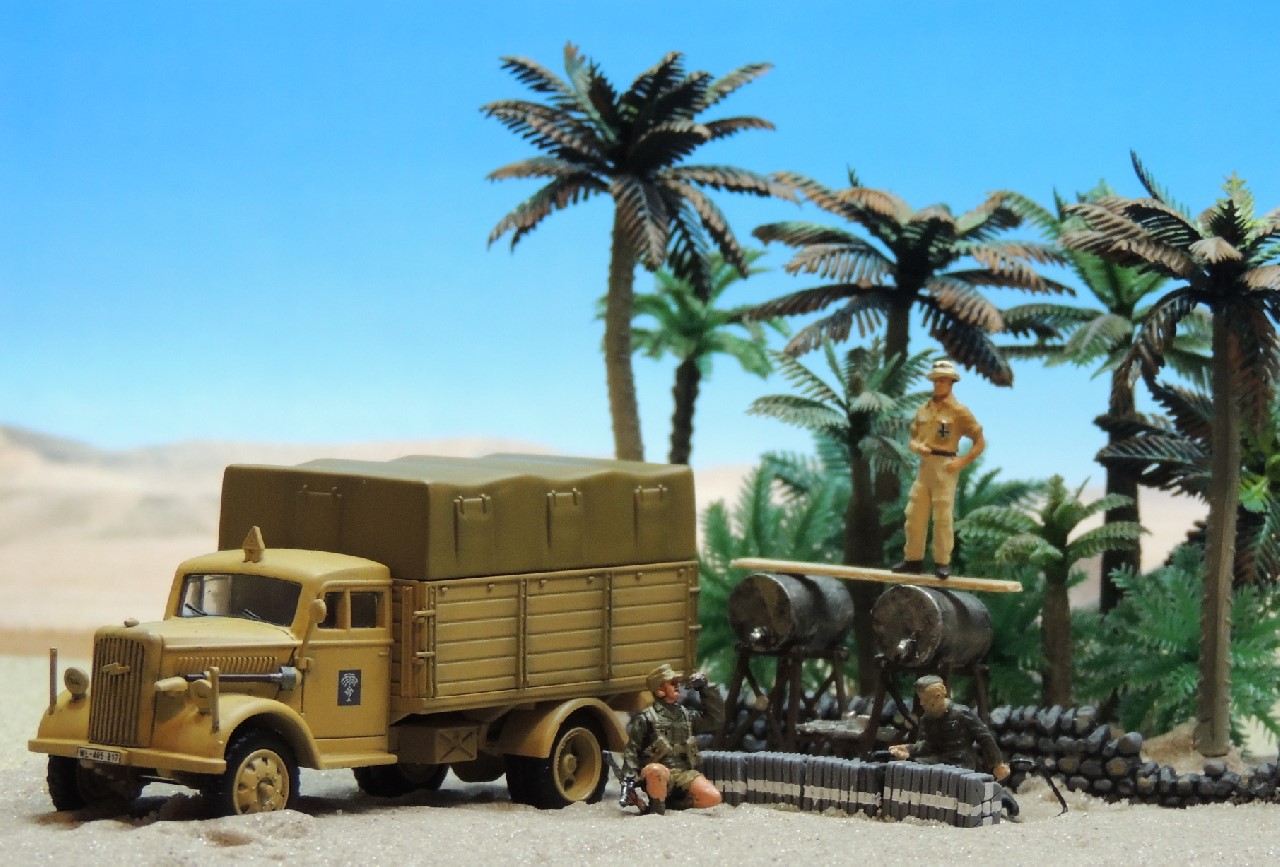I had intended to write a brief review of the Dragon 60369 Sherman “Cannon Ball,” a wading Sherman that landed at Utah Beach on D-Day. However, as I tried to understand where it fit in within the framework of the D-Day landings, I found that my knowledge of tank warfare on D-Day was quite limited. I had no real sense for how many tanks landed at each beach and how many were lost. I decided that, at the very least, I would get a rudimentary “big picture” grasp of tank landings at Utah Beach and try to understand the other four beaches at a later time. For those not interested, please skip to the photos below.
Sherman Tanks at Utah Beach
On D-Day, June 6, 1944, approximately 100 U.S. Army Sherman tanks attempted to land at Utah Beach in support of the 4th Infantry Division. The U.S. deployed two tank battalions at Utah Beach, the 70th and 746th – each consisting of 48 Sherman tanks.
The 70th Tank Battalion was comprised of three tank companies, each with 16 Sherman tanks. Companies A and B were equipped with Duplex Drive Shermans; Company C was made up of 16 wading Shermans, including 4 dozers. “Cannon Ball” was one of the wading tanks in Company C. (Note: Each tank battalion also had a D Company made up of Stuart light tanks.)
The 70th lost 9 Shermans during the landing — 5 DD Shermans and 4 Wading Shermans, including “Cannon Ball.” Throughout the day, the 70th lost another 7 tanks, for a total of 16. Thus, by the end of D-Day, the 70th had lost one third of its Sherman tanks.
The 746th Battalion, on the other hand, did not have Duplex Drive Shermans, and all 48 Wading Sherman tanks landed safely, though the Battalion did lose two Shermans throughout the day.
It bears mentioning that by the end of D-Day, all objectives at Utah Beach had been achieved and the area was securely under control of the Allies. This is in sharp contrast with Omaha Beach, where the Allies suffered tremendous casualties and did not reach all objectives.
The chart below provides context regarding how “Cannon Ball” fit within the organizational framework of the 70th Tank Battalion at Utah Beach on D-Day. (I made the chart for learners like me who want to visualize where a small piece fits into a larger whole. I’m just an amateur so please use at your own risk.)
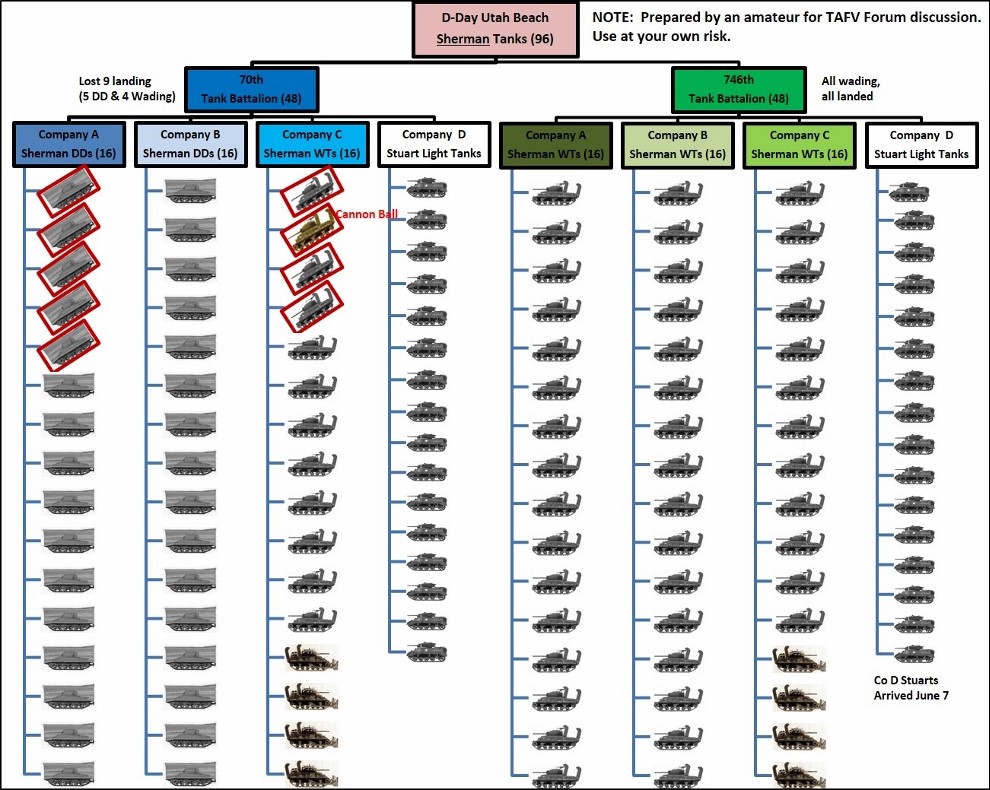
The 70th Tank Battalion
Before we get to “Cannon Ball,” here are a few bullets on the storied 70th Tank Battalion, to which “Cannon Ball” belonged:
- Formed in July 1940, the 70th Tank Battalion was the first independent tank battalion in the U.S.
- The Battalion fought in every major U.S. campaign in WWII, beginning with North Africa, through Sicily, Italy, and France, and finally in Germany itself.
- While in Algeria, the 70th trained the Free French soldiers who later formed the 2nd French Armored Division.
- The 70th was called the “soixante-dix” (meaning “70”) by the French, a phrase that later appeared on the sash of their mascot, Joe Peckerwood.
- Among other achievements, the 70th participated in the D-Day invasion, the Battle of the Bulge, and eventually crossed the Rhine to see the end of the war in Germany.
- In Normandy, the 70th supported the famous 101st Airborne Division during combat at St. Mere Eglise.
- Considered the most experienced U.S. tank battalion, the 70th was one of the most decorated of the war and received a Presidential Unit Citation for its role in the invasion of Normandy.
The Actual Tank
Unfortunately, there isn’t much information specifically on “Cannon Ball,” other than a well-known photo of it stuck in a shell hole at Utah Beach (see photo below). Nonetheless, here are a few bullets on what little I could gather from books and various corners of the internet:
- On D-Day, “Cannon Ball” was one of 16 Sherman wading tanks in C Company of the 70th Tank Battalion.
- It landed at Utah Beach but got bogged down in a shell hole.
- “Cannon Ball” was pulled out of the hole and put back into action.
- The tank had been previously fitted with a T4 Whiz-Bang Demolition Rocket Launcher in advance of D-Day. Following tests, the U.S. Army concluded that the launcher presented a risk to the crew and decided to remove the launcher prior to D-Day.
- “Cannon Ball” is one of very few D-Day tanks with wading trunks for which we have reliable marking information. But beyond that, it’s representative of the hundreds of amphibious tanks that fought the waves to reach shore at Normandy. Numerous DDs failed to make it, particularly at Omaha, while most wading tanks made it to shore.
I searched numerous books and the internet and, as far as I know, the two photos below are the only existing photos of “Cannon Ball.” If anyone knows of any other pictures, I’d love to see them.
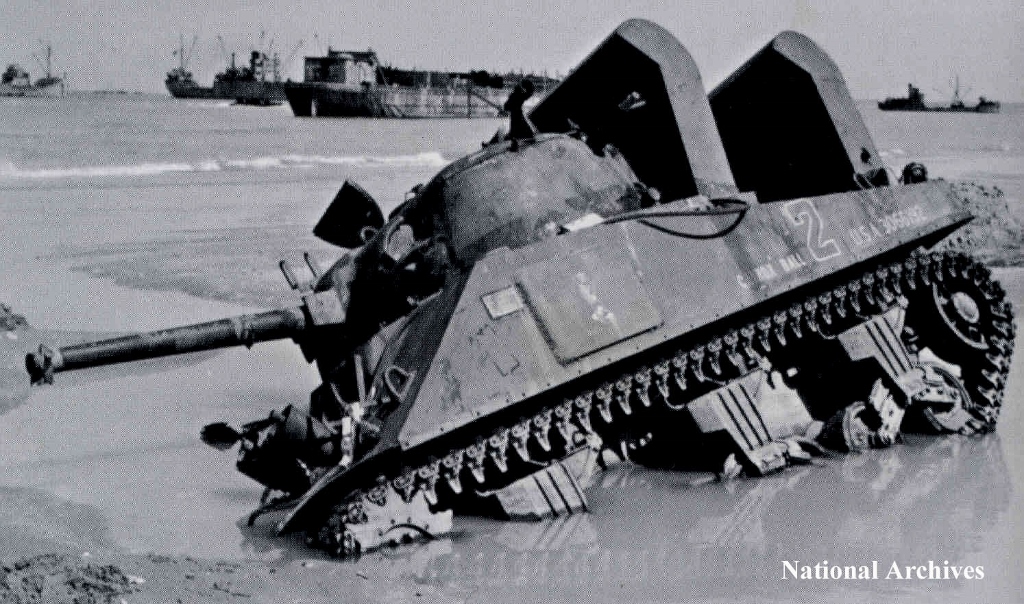
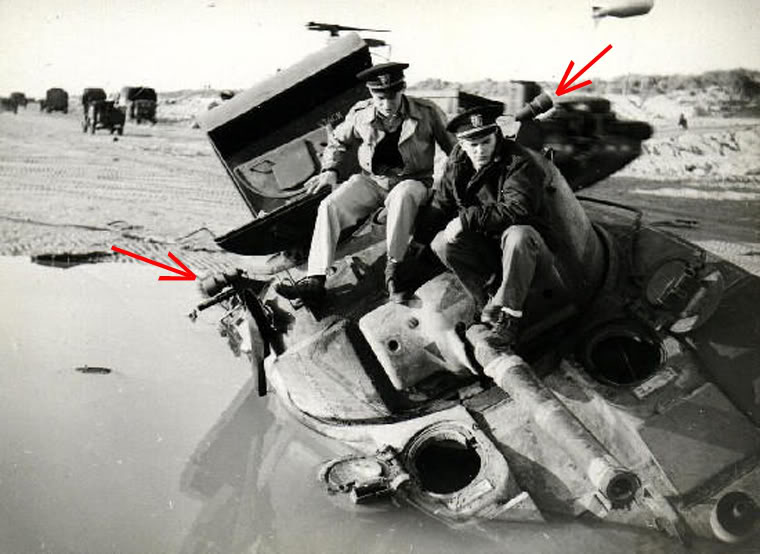
Of interest are the two mounting attachments on either side of the top of the turret. As mentioned, prior to D-Day “Cannon Ball” had been equipped with the Whiz Bang rockets (see profile below). The photo with the red arrows was posted by Steve Zaloga on another forum.
Note: Subsequent to publication of this article in December 2015, the photo of “Cannon Ball” below appeared in Armored Strike Force: The Photo History of the American 70th Tank Battalion in World War II, by Charles C. Roberts Jr., published July 1, 2016. It is posted here for discussion purposes under the fair use exception to the copyright laws.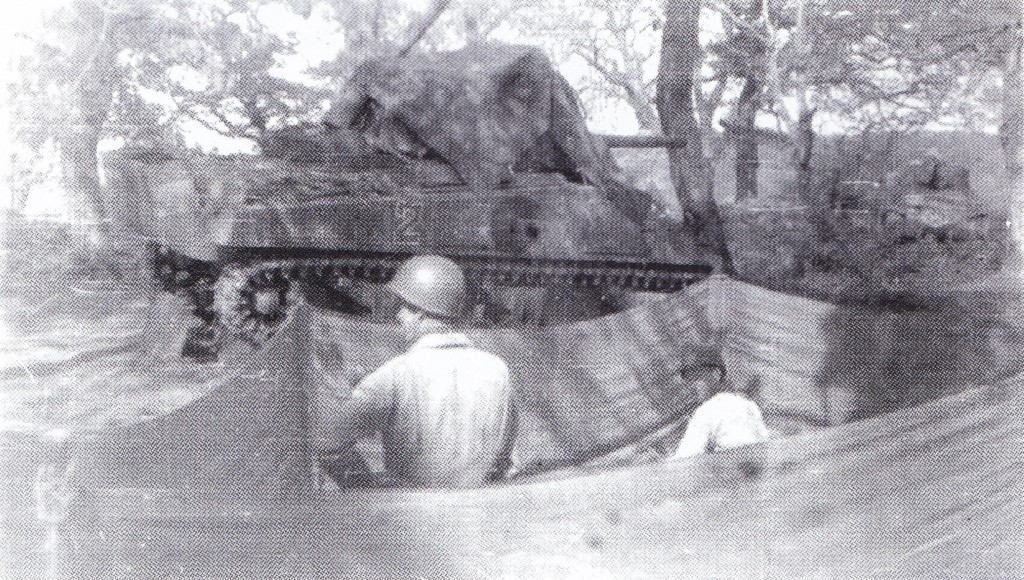 Though somewhat grainy, this photo is important historically in that it provides clear evidence that “Cannon Ball” survived the landing at Utah and lived to fight another day. It is similarly important for the modeler in that it confirms that the markings on the starboard side of the tank were symmetrical to those on the port side — an assumption usually made but often wrong. Note that the wading stacks were removed once the tank left the beach.
Though somewhat grainy, this photo is important historically in that it provides clear evidence that “Cannon Ball” survived the landing at Utah and lived to fight another day. It is similarly important for the modeler in that it confirms that the markings on the starboard side of the tank were symmetrical to those on the port side — an assumption usually made but often wrong. Note that the wading stacks were removed once the tank left the beach.
D-Day Shermans: Only “Cannon Ball” and “Carole” in 1/72
As far as I know, the only two D-Day Shermans in 1/72 scale are “Cannon Ball” and “Carole,” a Firefly with the 13th/18th Royal Hussars of the 27th Armored Brigade (Dragon 60250).
Dragon produced another Normandy M4, the 60370 “Tonto,” representing the U.S. 37th Tank Battalion, but that battalion didn’t arrive in Normandy until July 13, 1944, incidentally, at Utah Beach.
Dragon also produced another Normandy Firefly, the 60251 “Velikye Luki,” representing the Northamptonshire Yeomanry, but the unit didn’t arrive until June 12 at Gold Beach.
The Dragon 60369 “Cannon Ball” Model
- This is the only U.S. tank in 1/72 representing D-Day and makes a fine pair with “Carole,” its British D-Day counterpart.
- “Cannon Ball” is something of a unique tank in 1/72, as it’s the only tank with wading trunks that represents an actual tank. (Note: Dragon included a 75mm M4A1 with its LCM(3) but it has no markings and did not represent any particular tank.)
- The markings on “Cannon Ball” are colorful – and distinctive. The turtle is “Joe Peckerwood” the Truculent Turtle with a tanker’s helmet and the sash carries the words “soixante-dix” meaning “70” in French. (See inset in the profile.)
- The model is missing the T4 Whiz Bang brackets and gun sight pointed by red arrows in the photo above.
And finally, here are the photos:
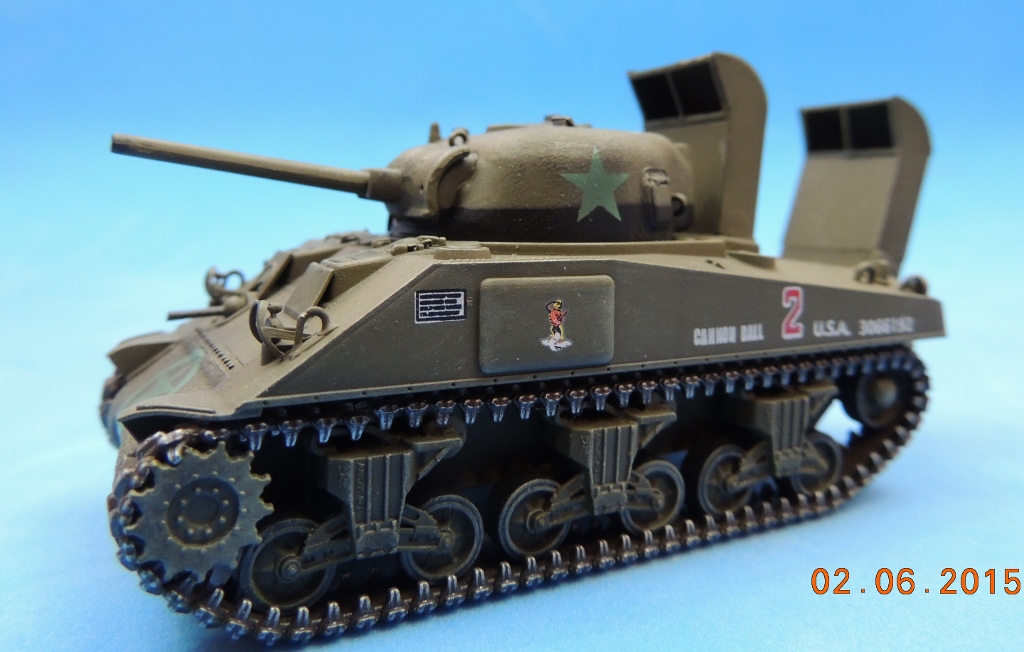
Note the dark band around the turret. Mastic glue was used as a sealant to waterproof the tank over the opening of the turret ring and hatches.

Note the red number with white trim, a distinctive feature of the 70th. Note also the applique armor on the starboard side of the turret.
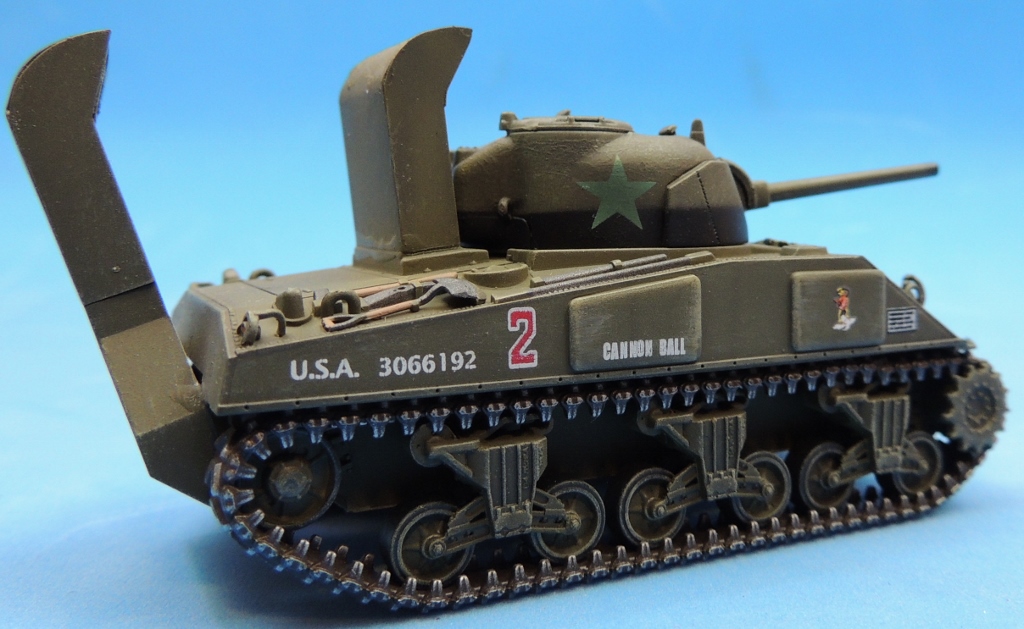
Note that the stars have been obscured. The black and white photo towards the bottom of this post graphically illustrates why.
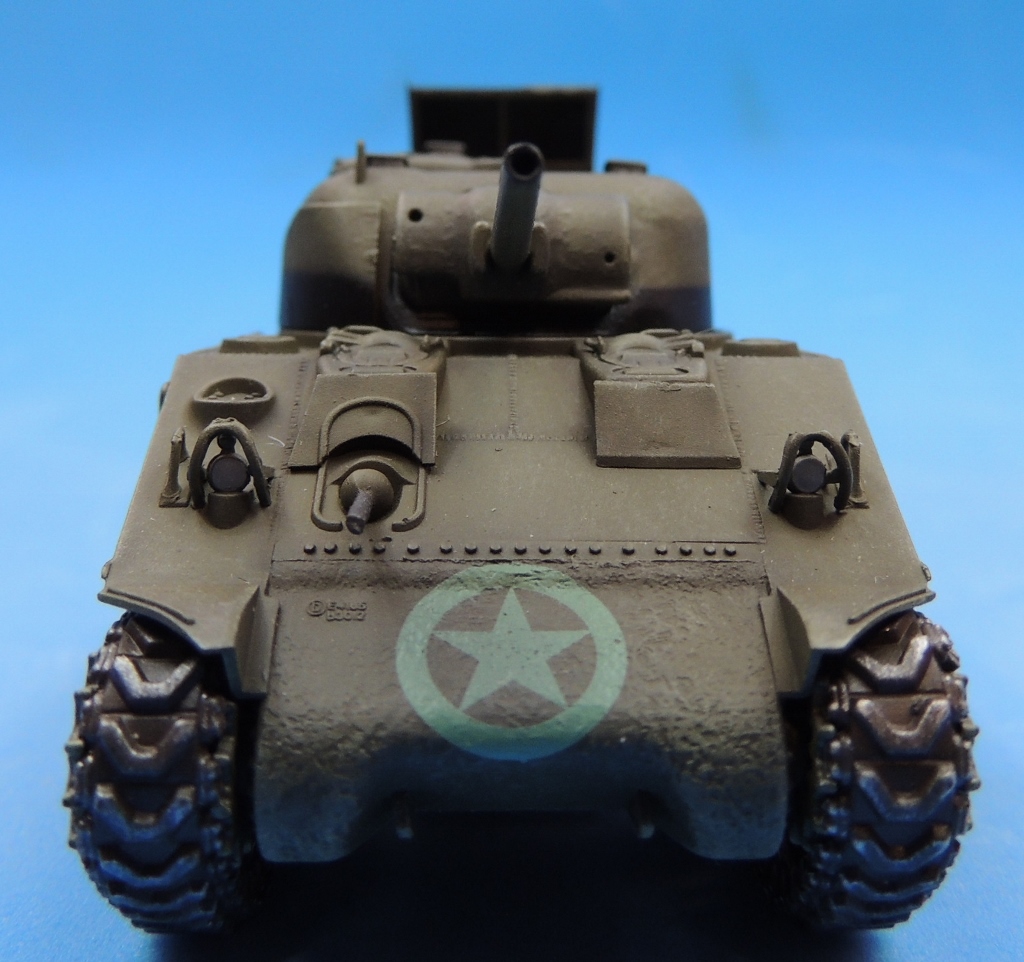
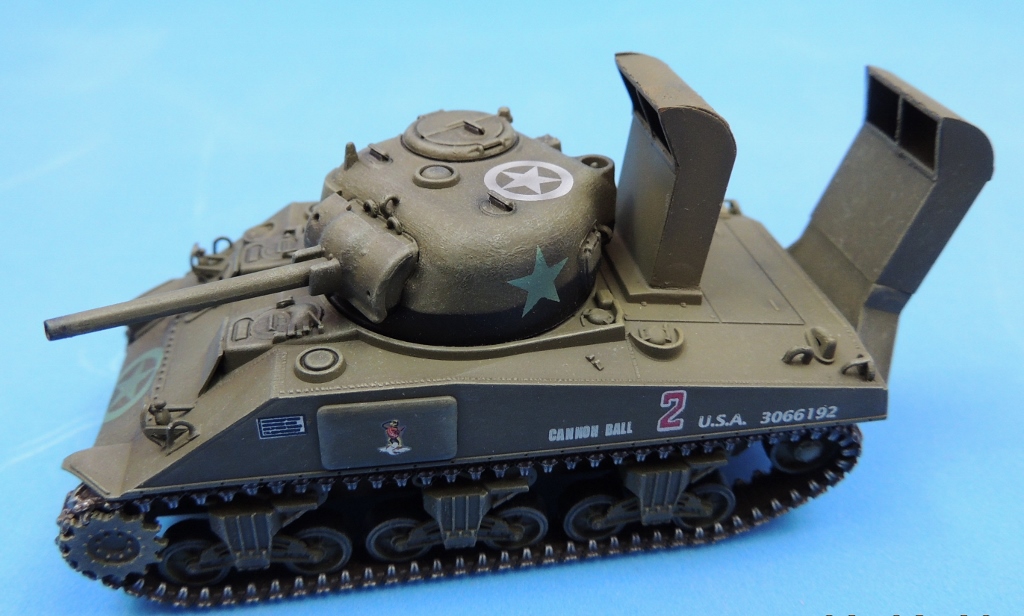
Here’s a close-up of Joe Peckerwood the “Truculent Turtle” and the waterproofing label.
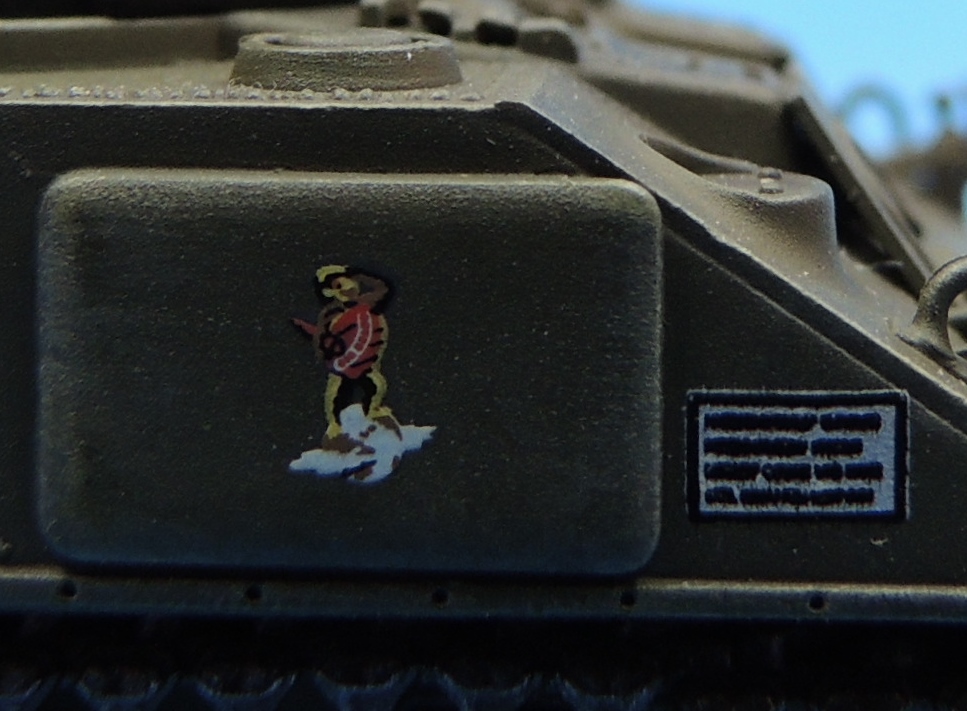
The U.S. Army began to obscure the white stars because they made excellent targets for German tank crews.
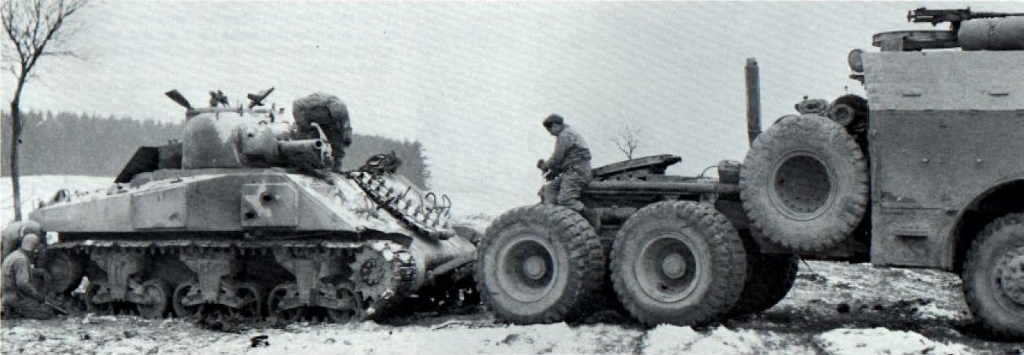
The Profiles
For those who love profiles, this is what “Cannon Ball” looked like on D-Day, from Zaloga’s Sherman at War (2): The U.S. Army in the European Theatre 1943-45.

This is what “Cannon Ball” looked like before D-Day, when it still had the Whiz Bang rockets, from Steve Zaloga’s U.S. Armored Funnies: U.S. Specialized Armored Vehicles in the ETO in World War II.
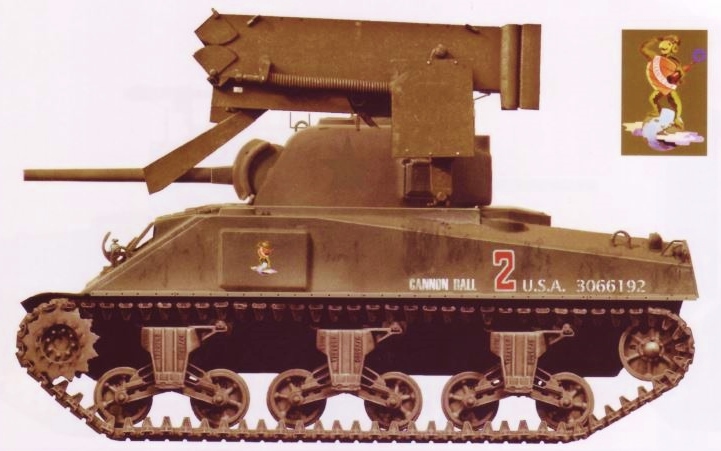
For those interested in what a wading dozer looks like, here’s a profile of the “Double Trouble,” also from the 70th Tank Battalion. The profile is also from Zaloga’s Funnies.
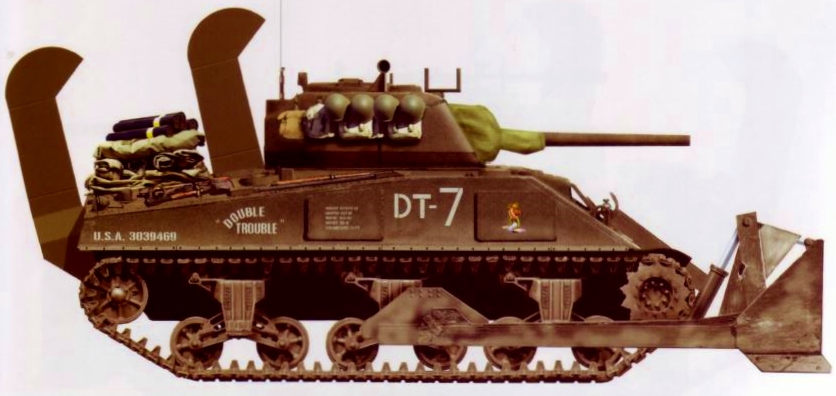
Here’s a lagniappe photo of the “Cannon Ball” with “Carole” (Dragon 60250), its British D-Day Sherman brother (or sister).

The Upshot
The Dragon 60369 M4 Sherman “Cannon Ball” is almost flawless. Other than the two mounting attachments for the Whiz Bang rockets missing on either side of the top of the turret, the 60369 is a fine and faithful representation of the actual Sherman tank that landed at Utah Beach on D-Day.
I hope to do a review of the Dragon 60250 Sherman Firefly “Carole” in the near future.
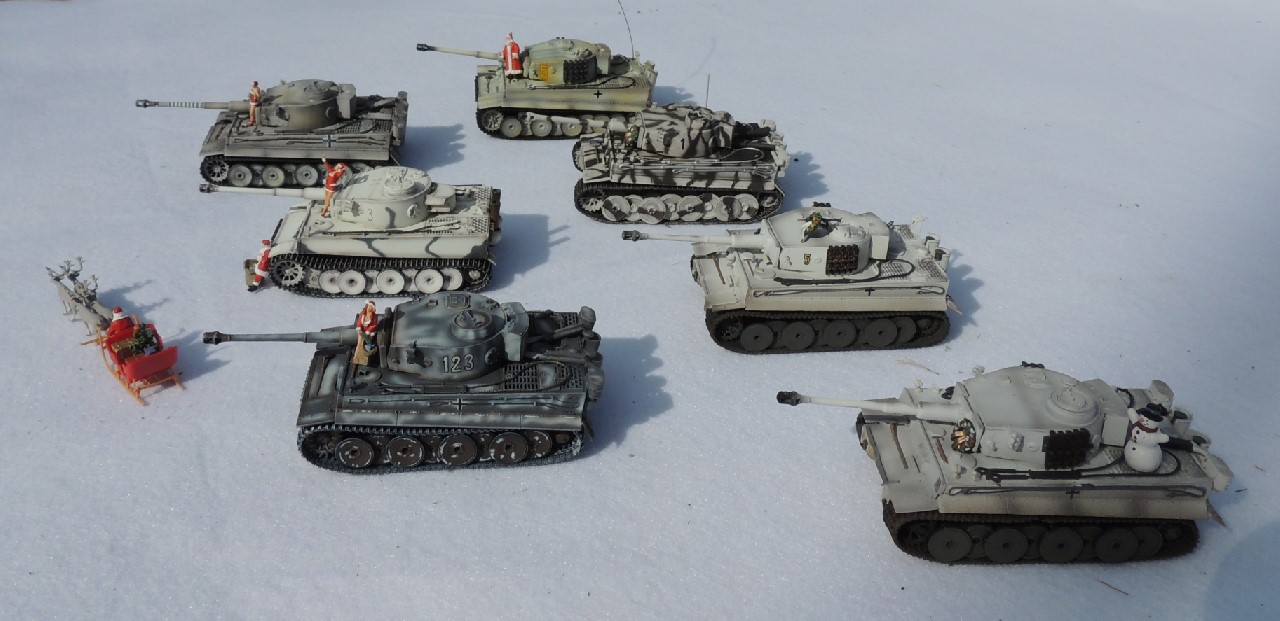 White Rhino and Bumblebees: Here is a photo of a Nashorn and a couple of Hummels.
White Rhino and Bumblebees: Here is a photo of a Nashorn and a couple of Hummels.

